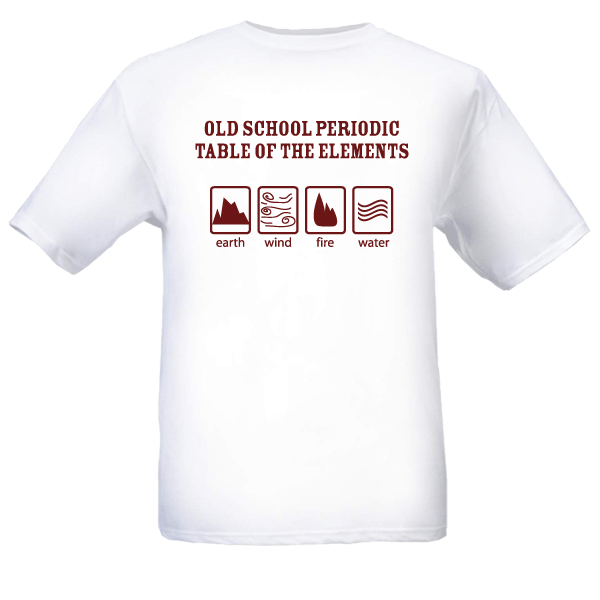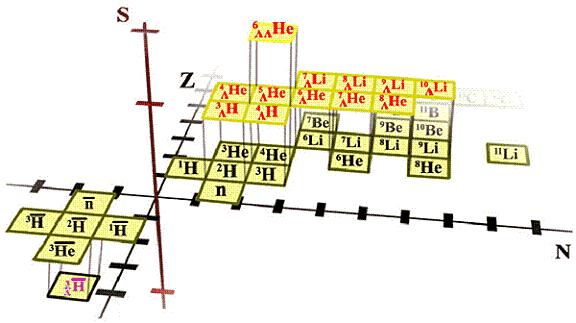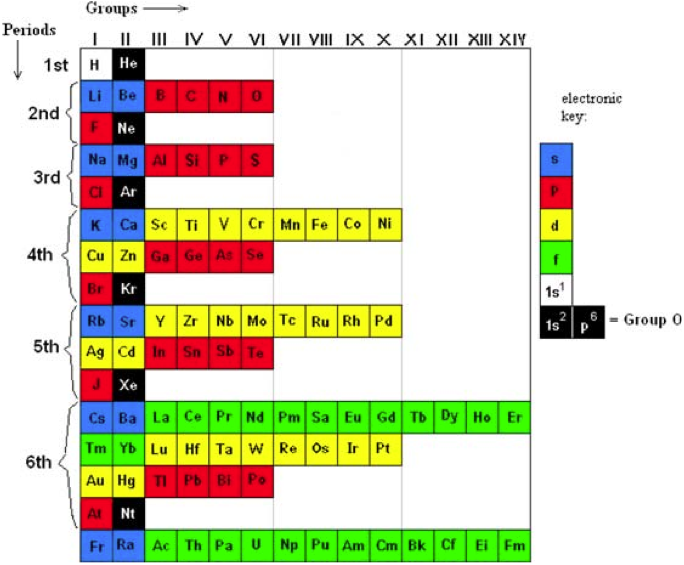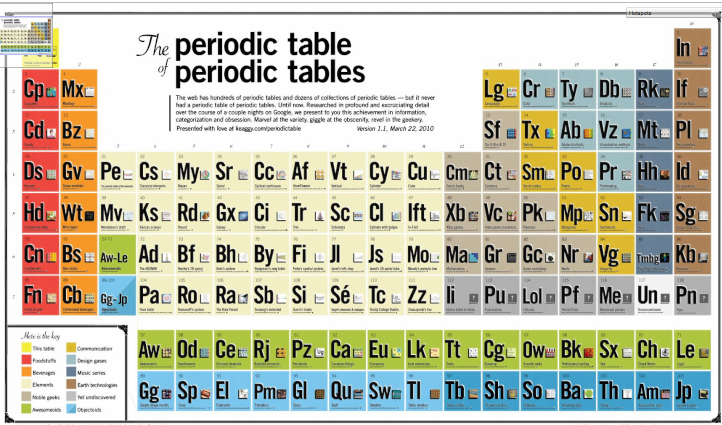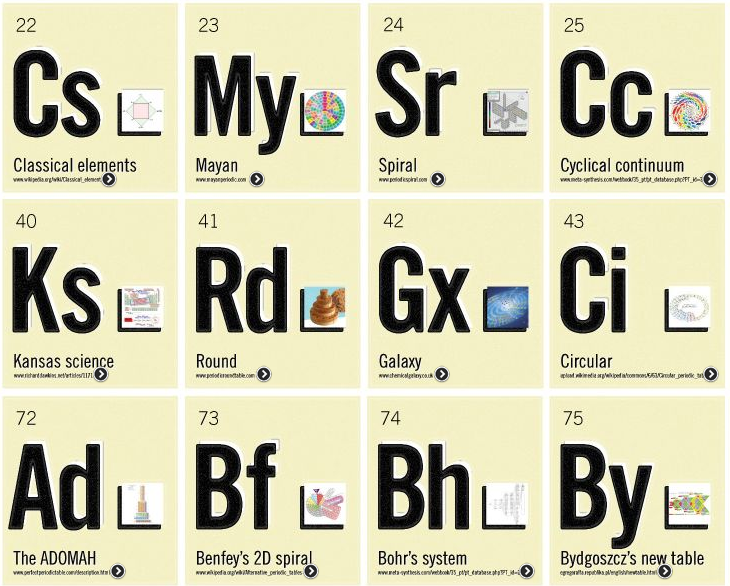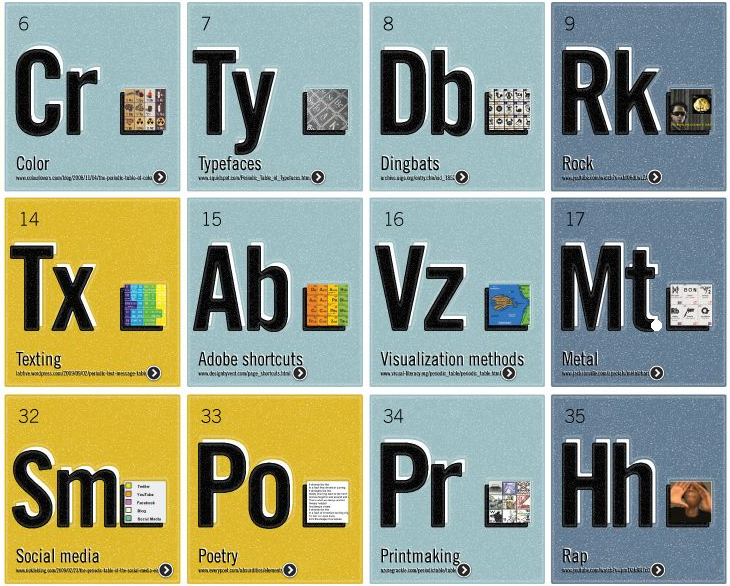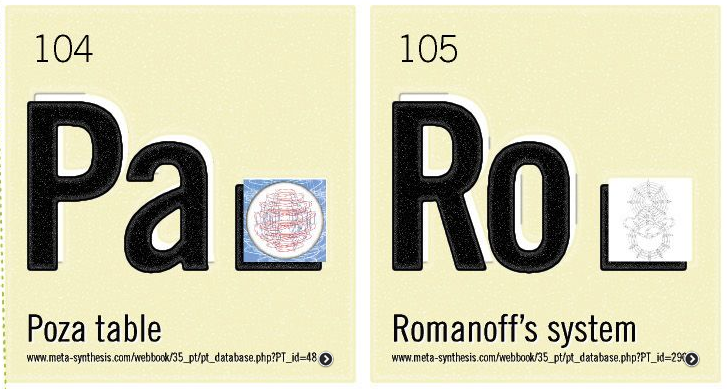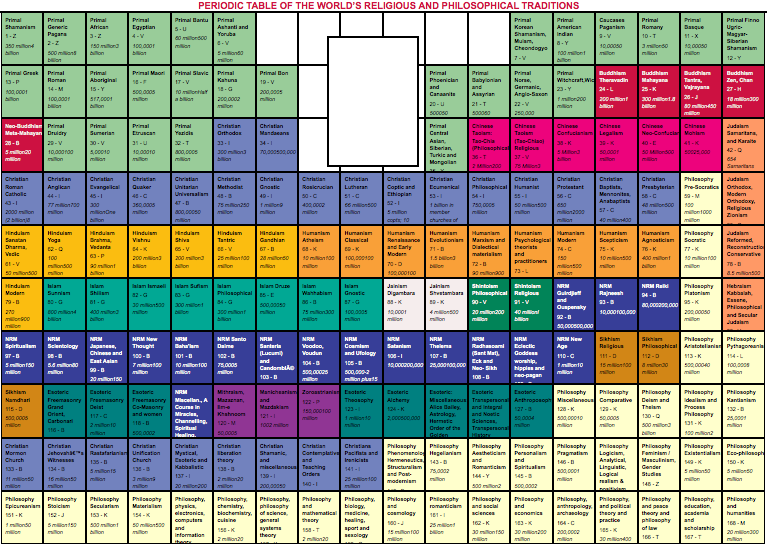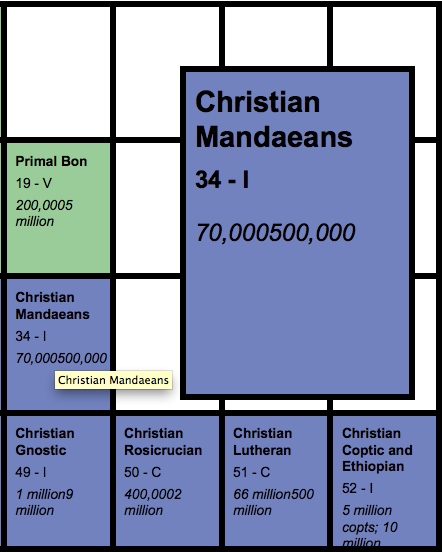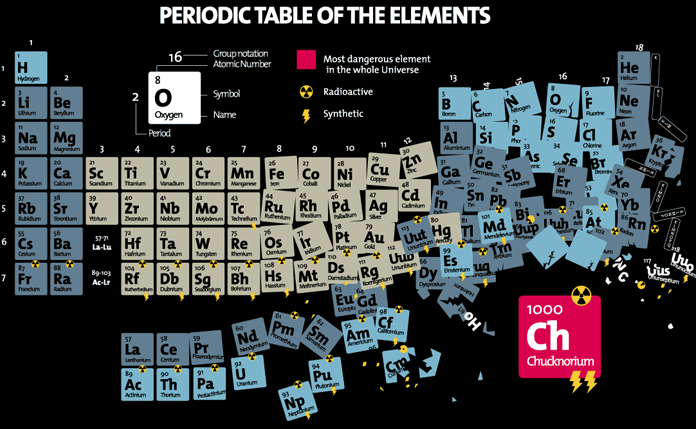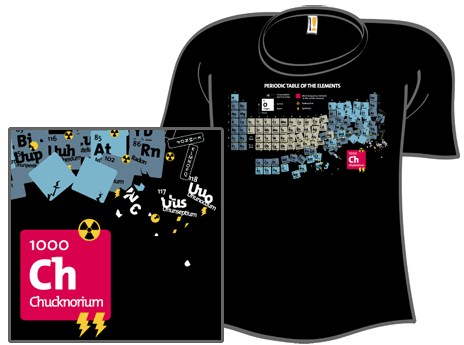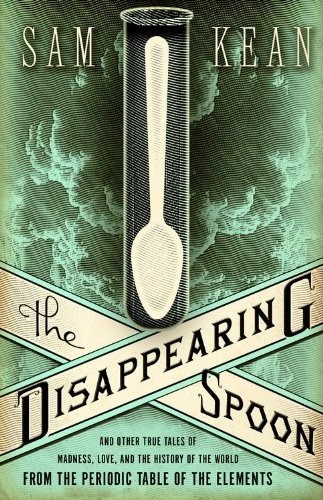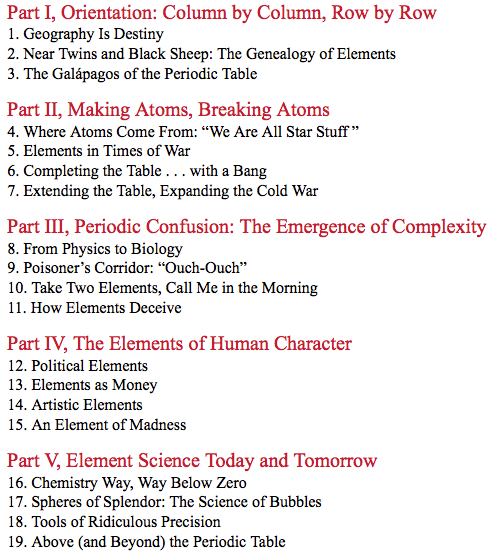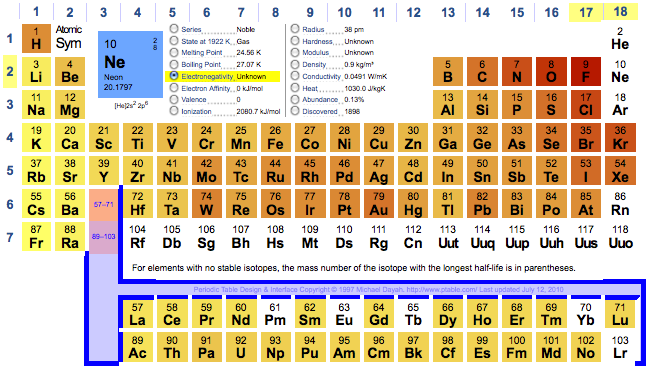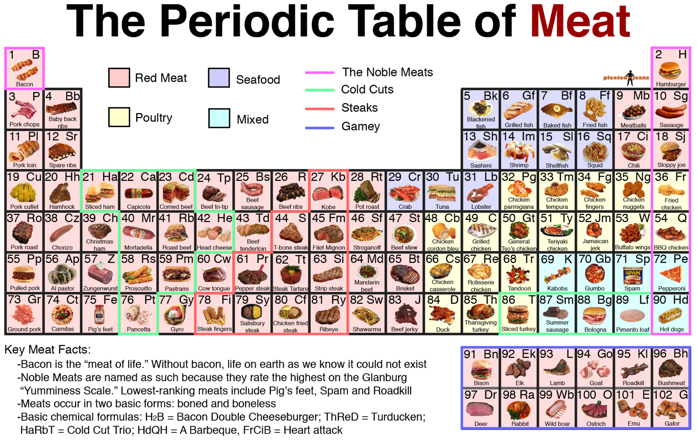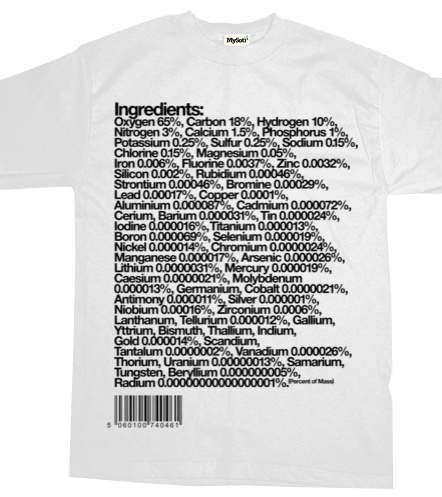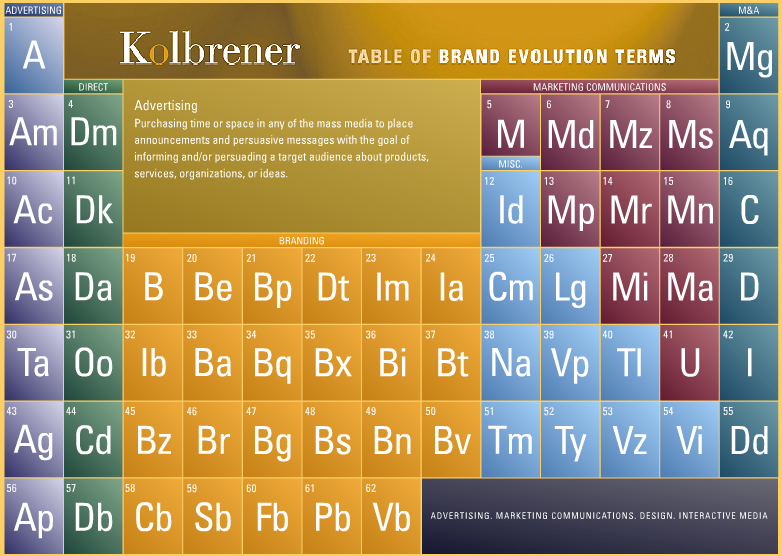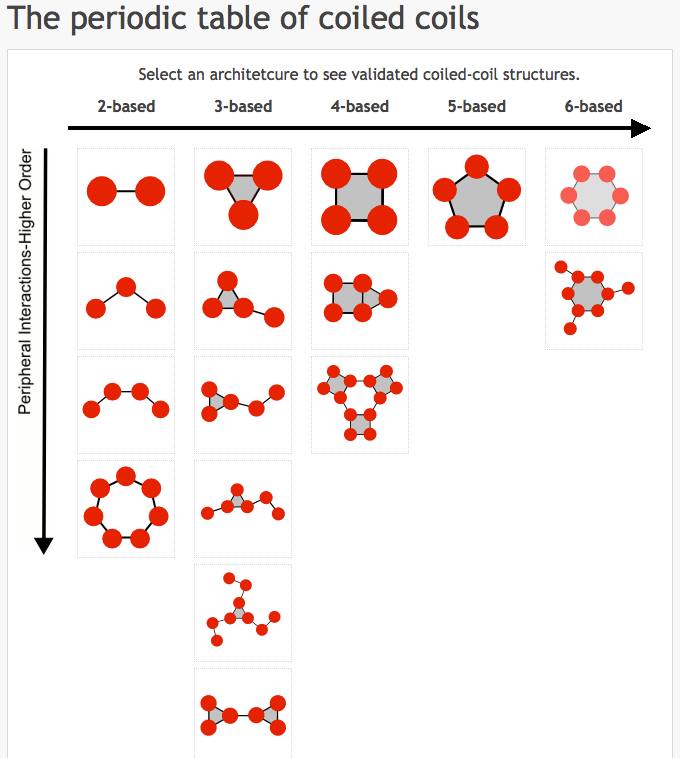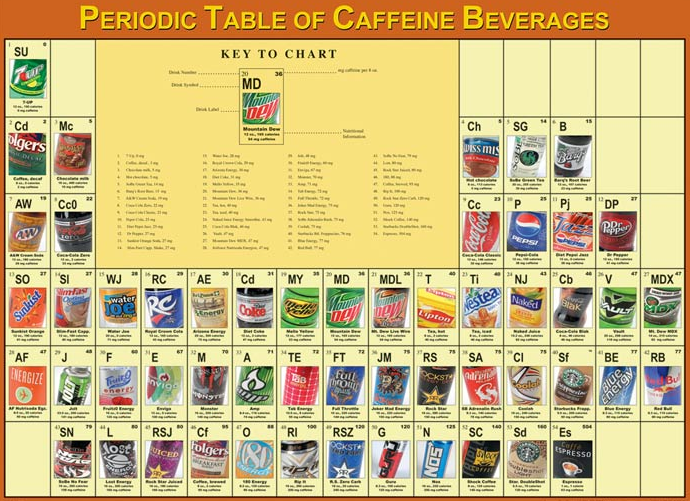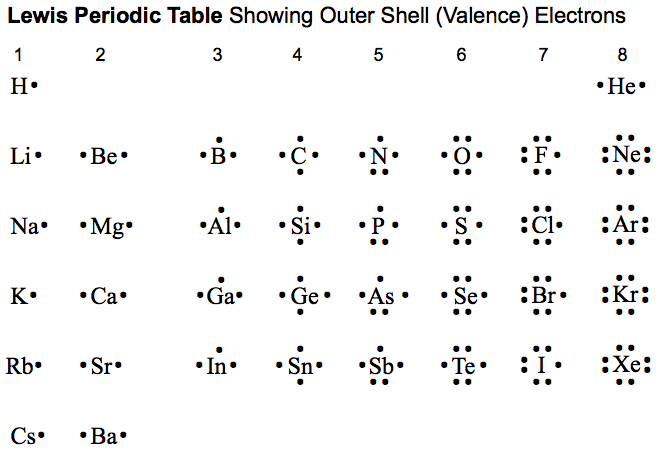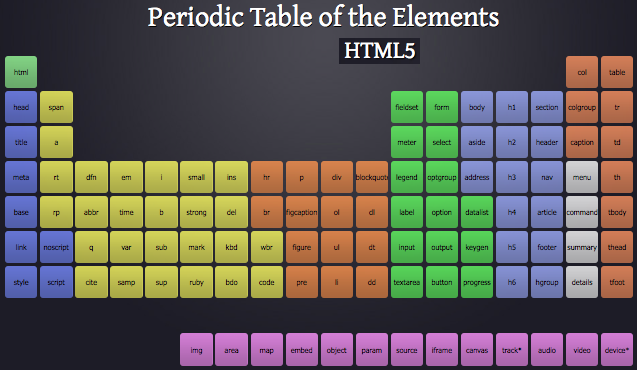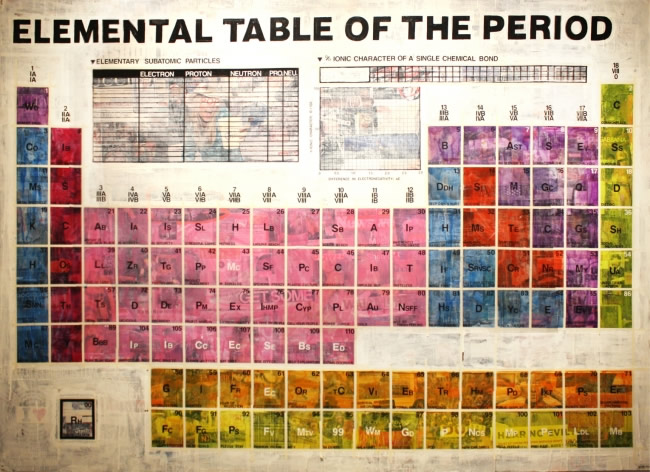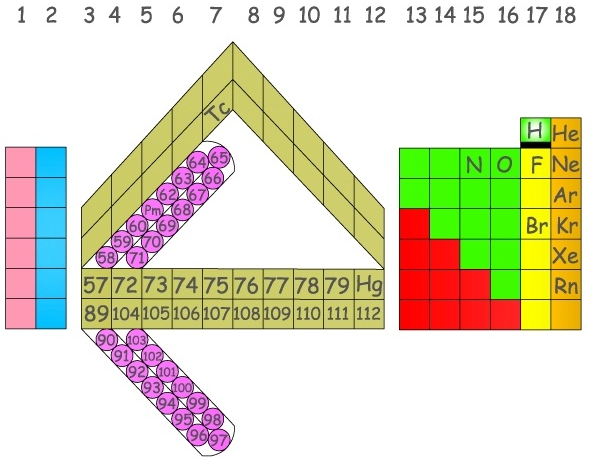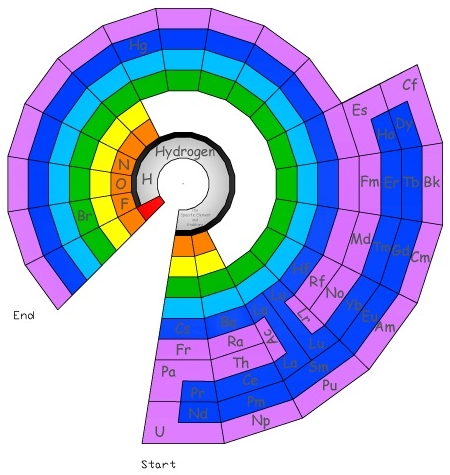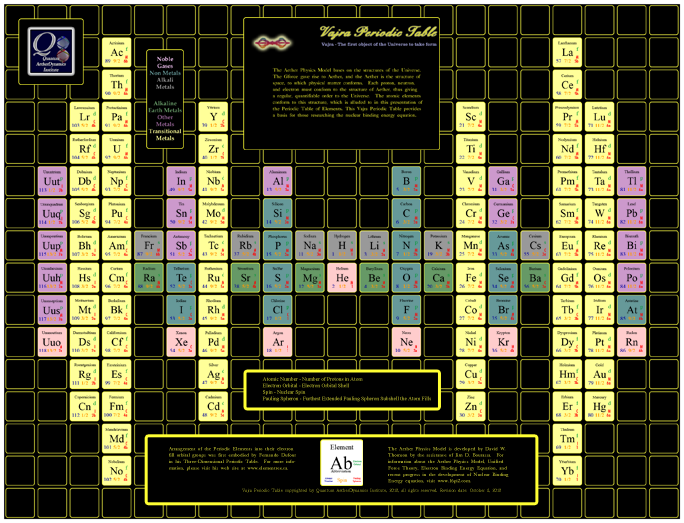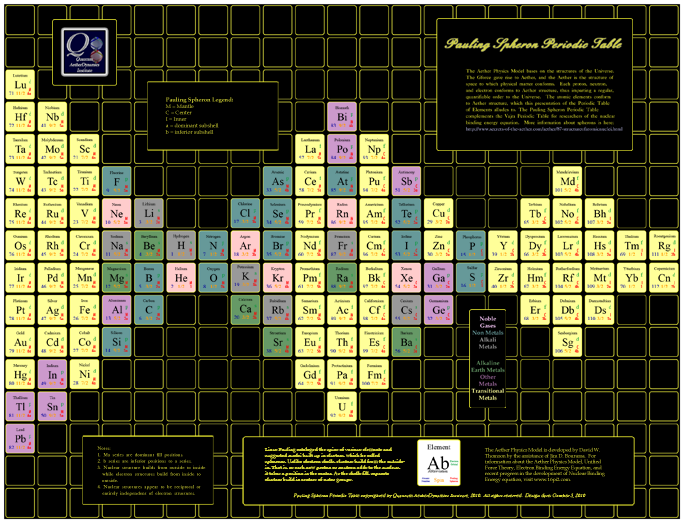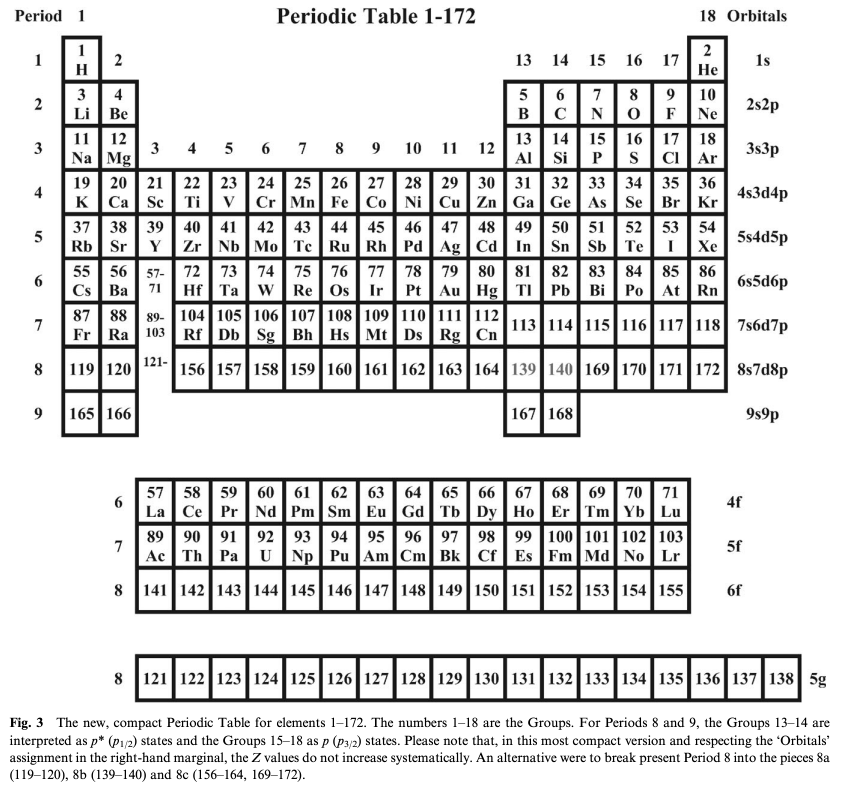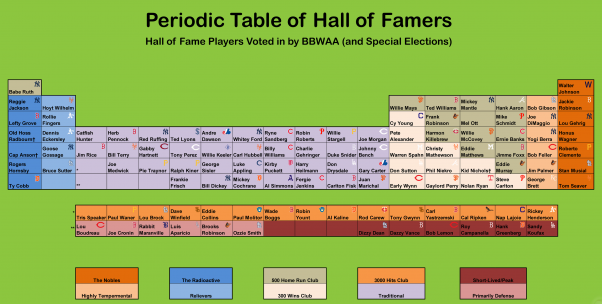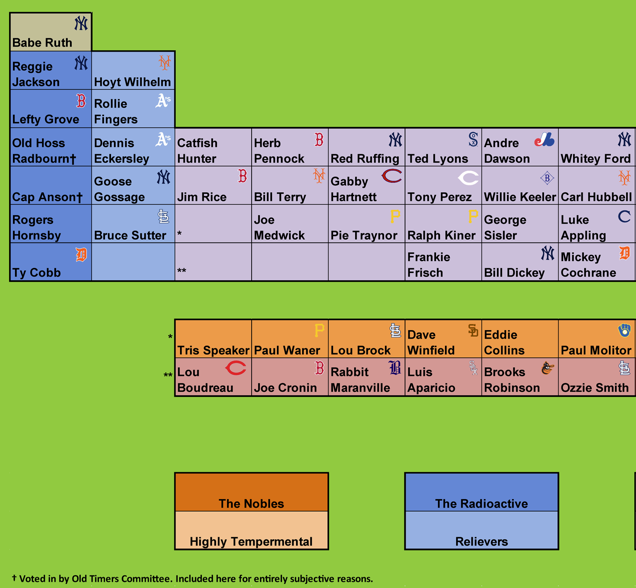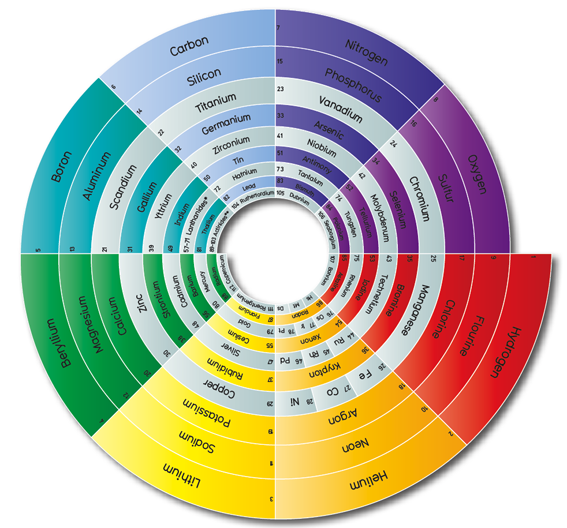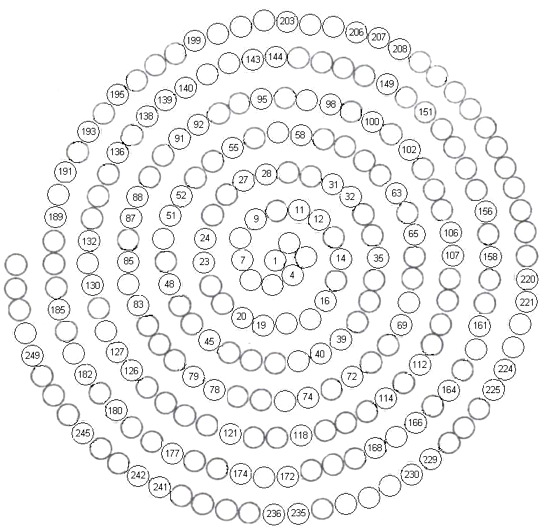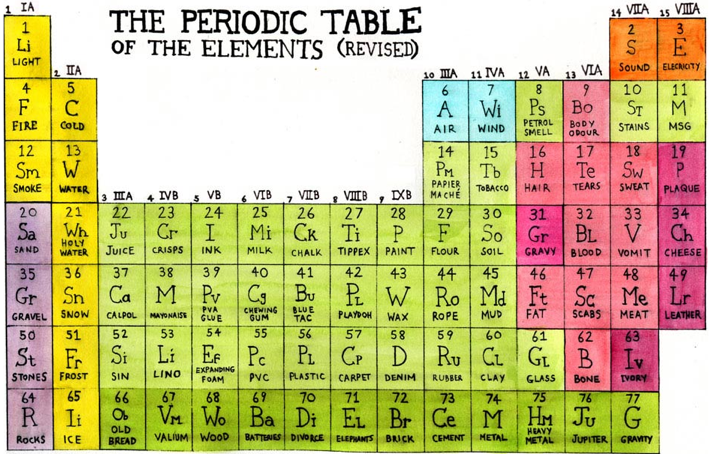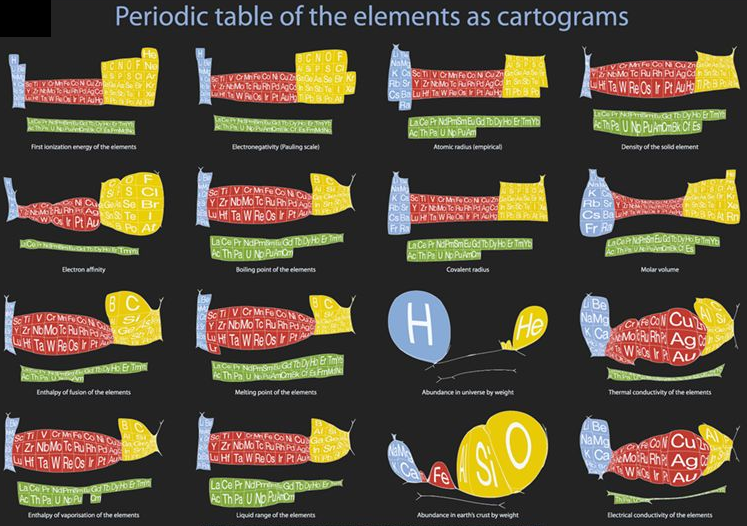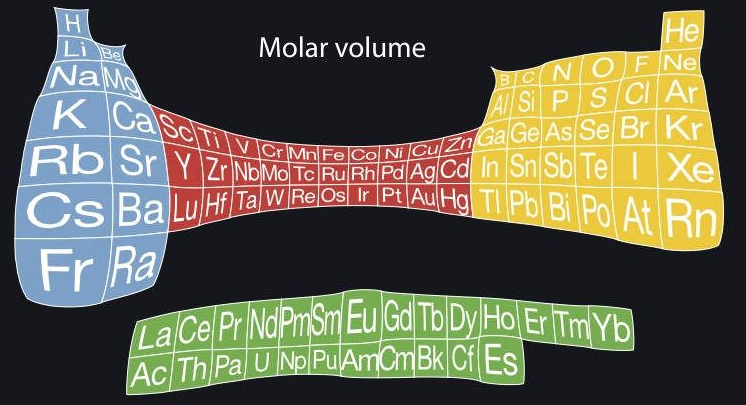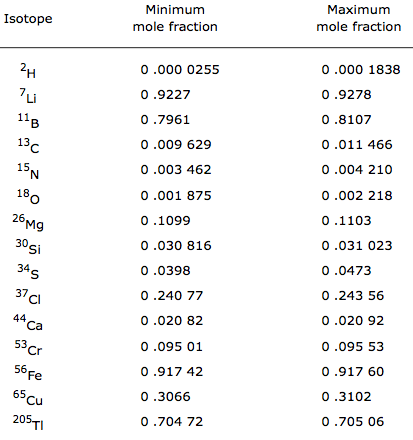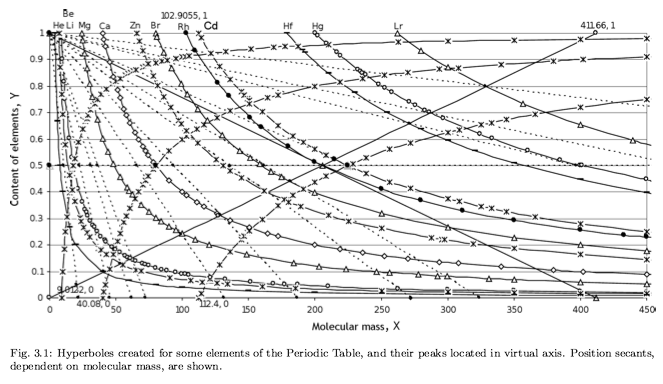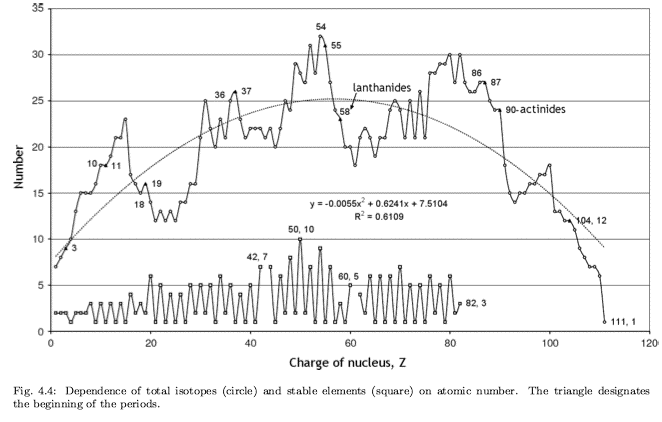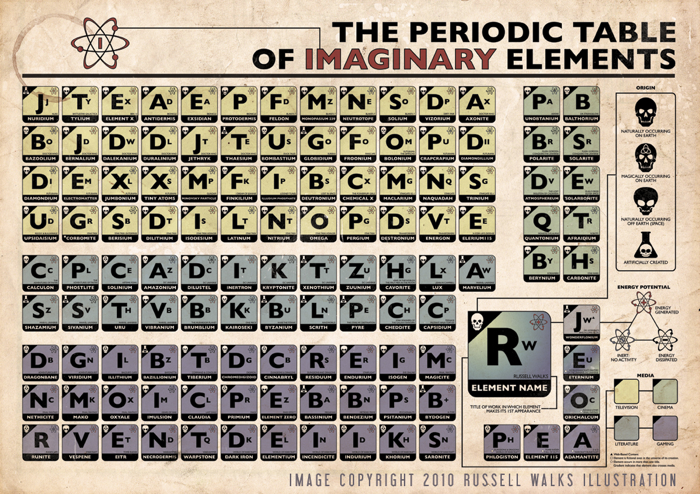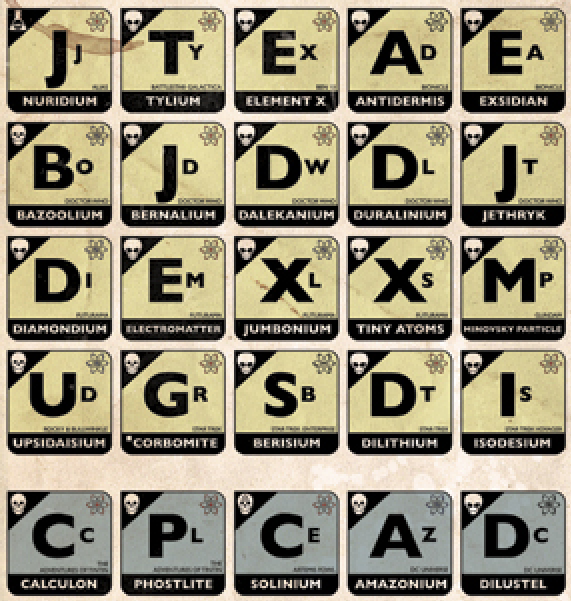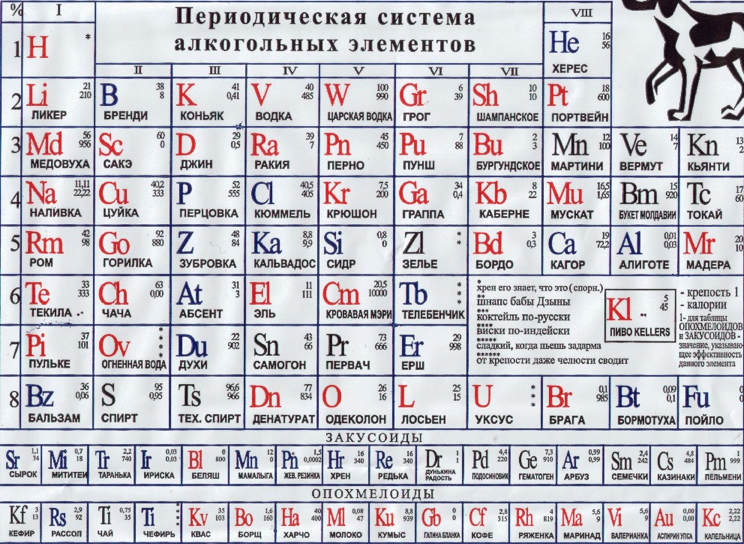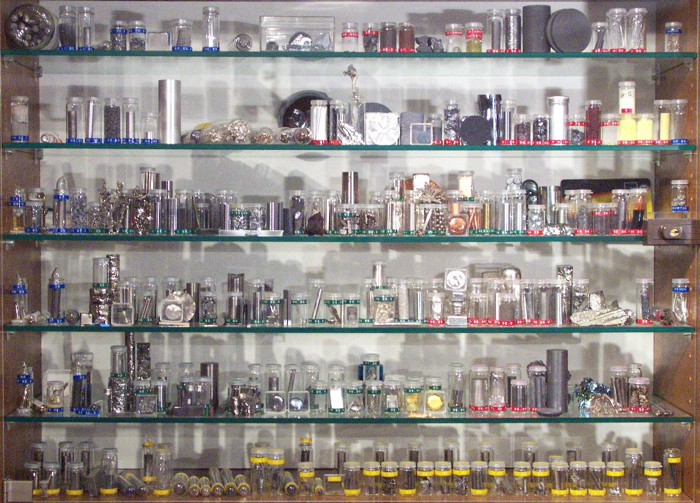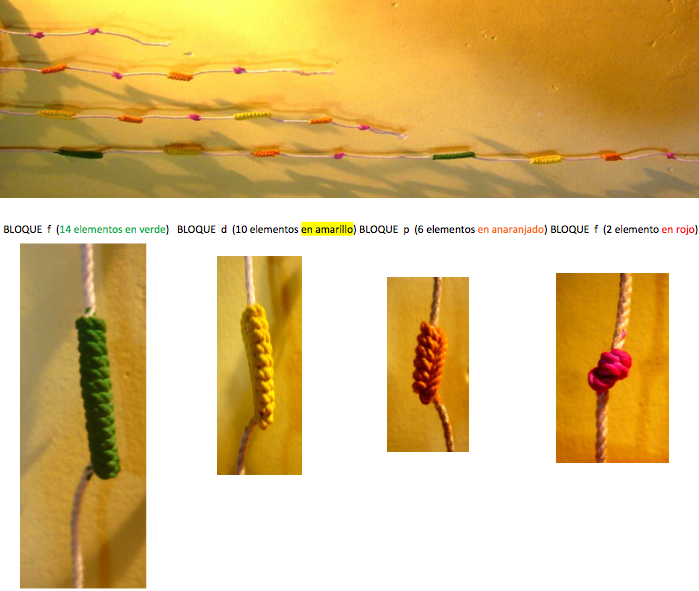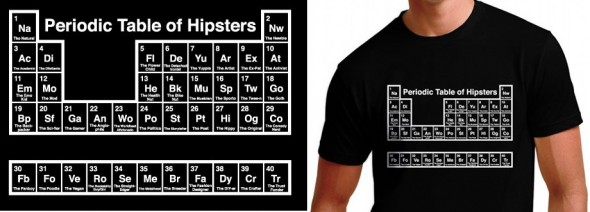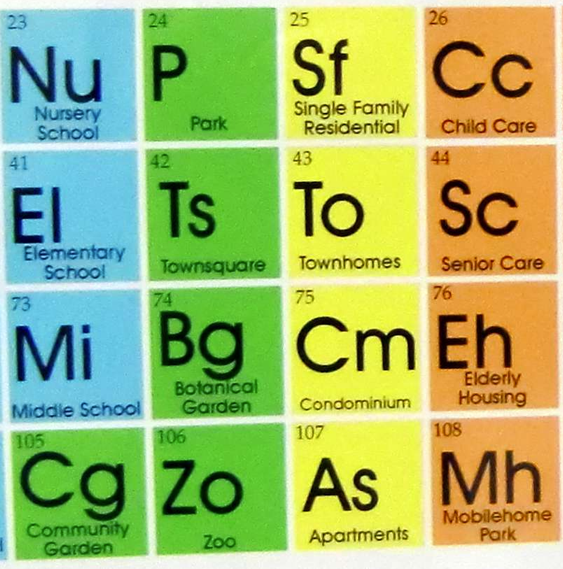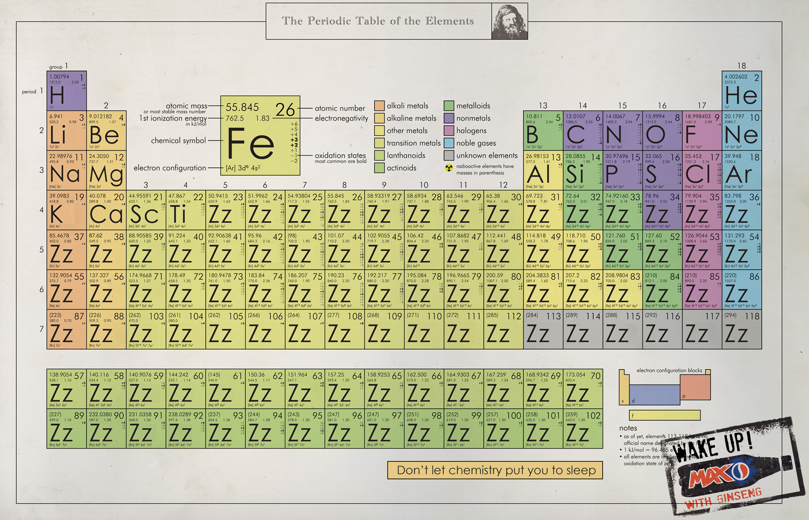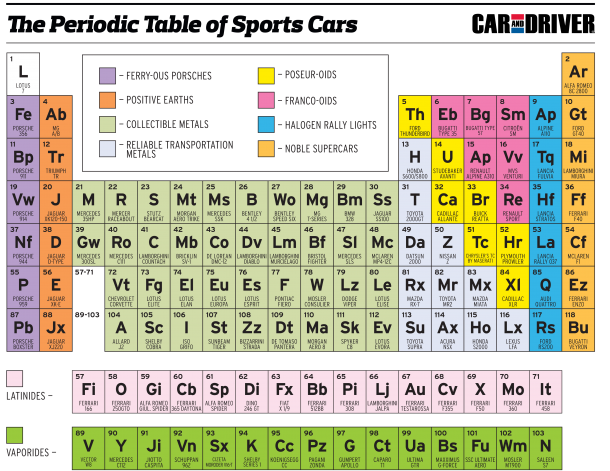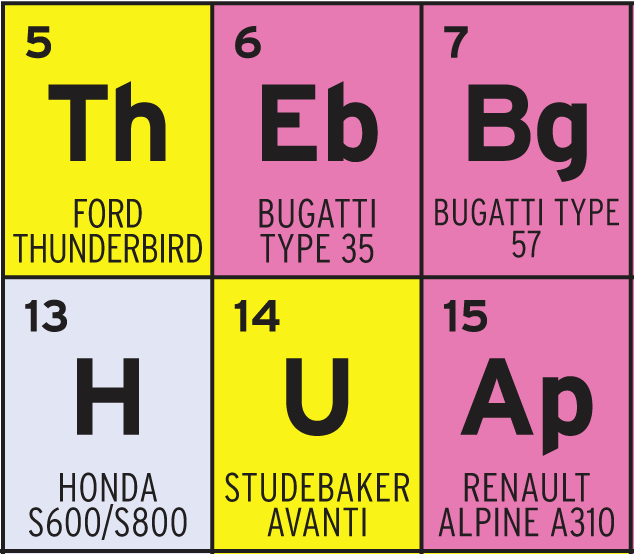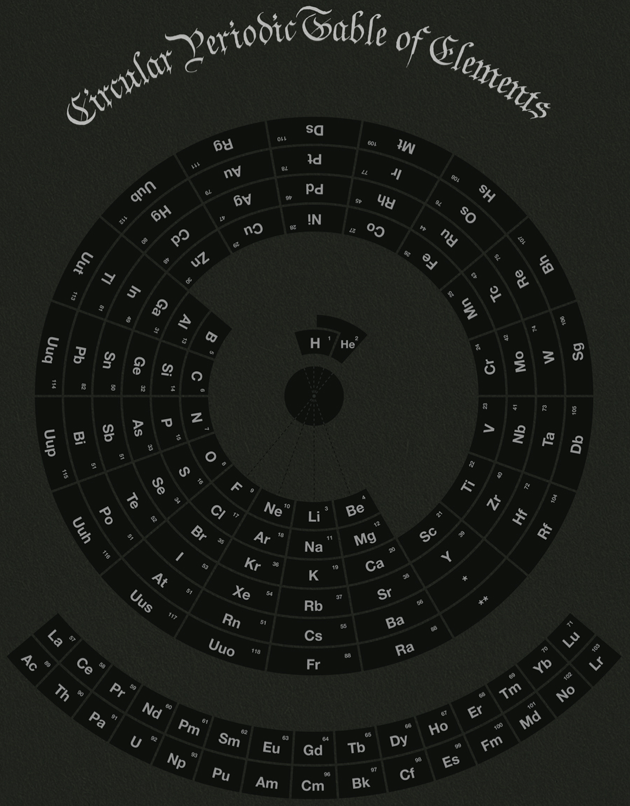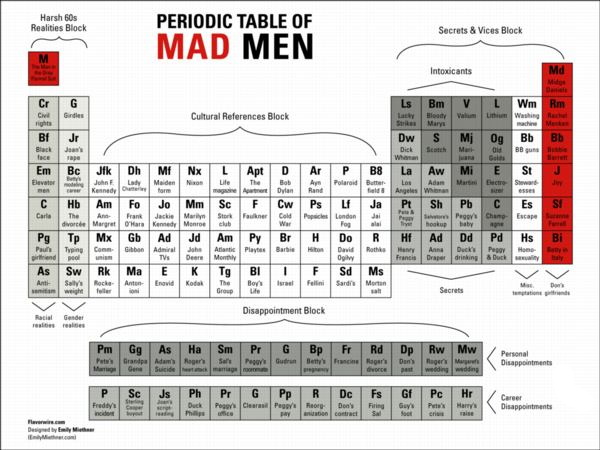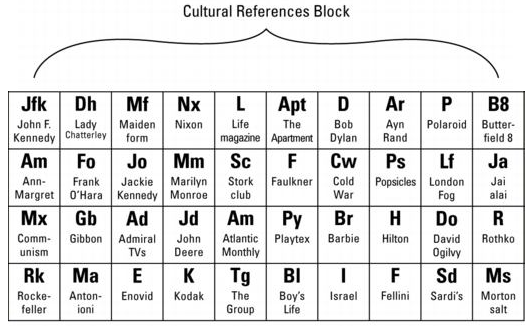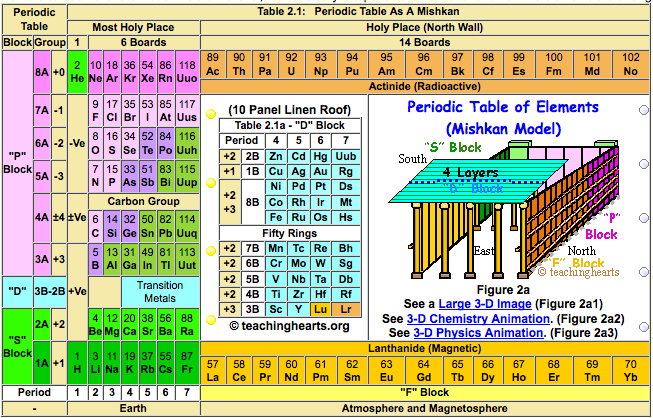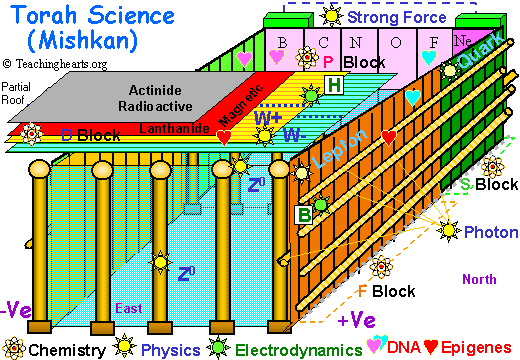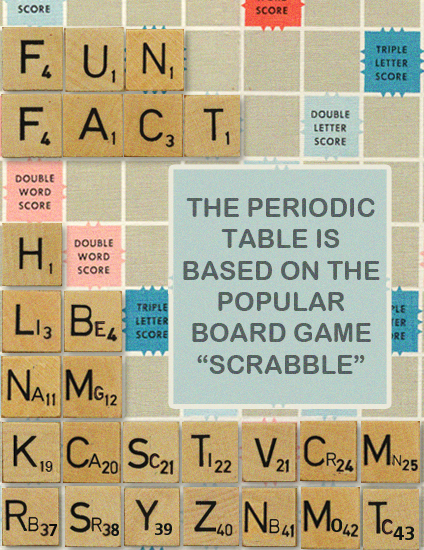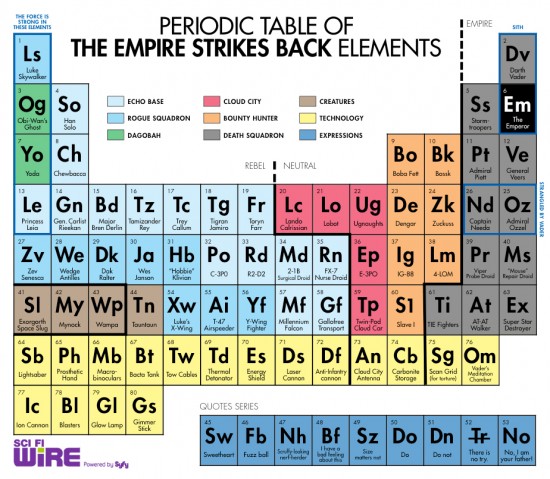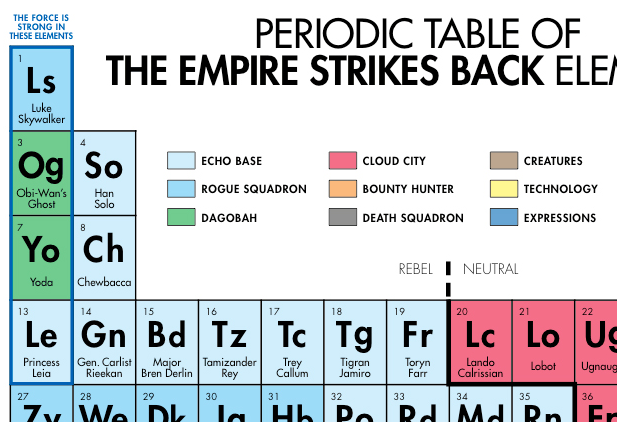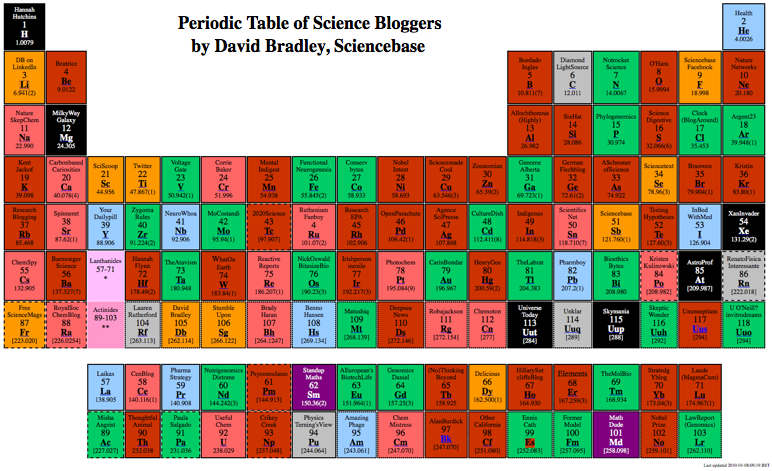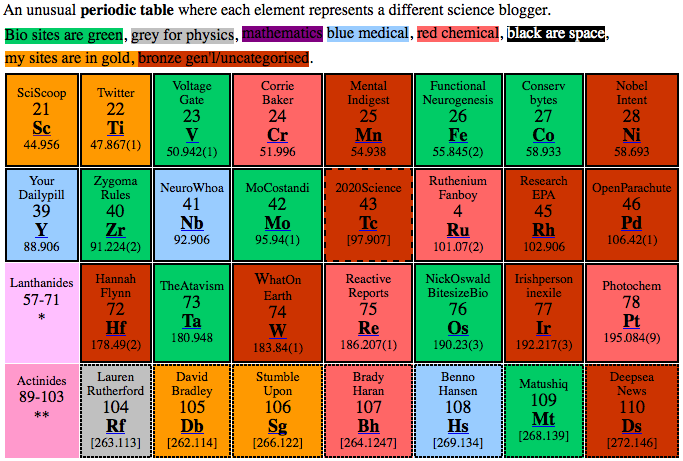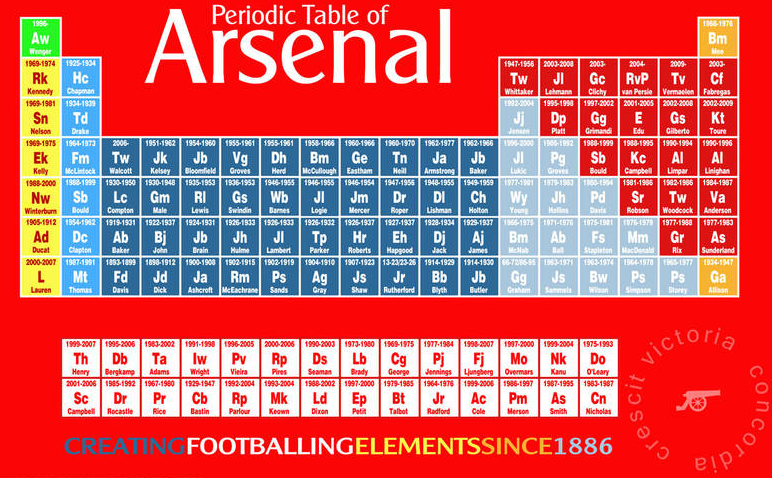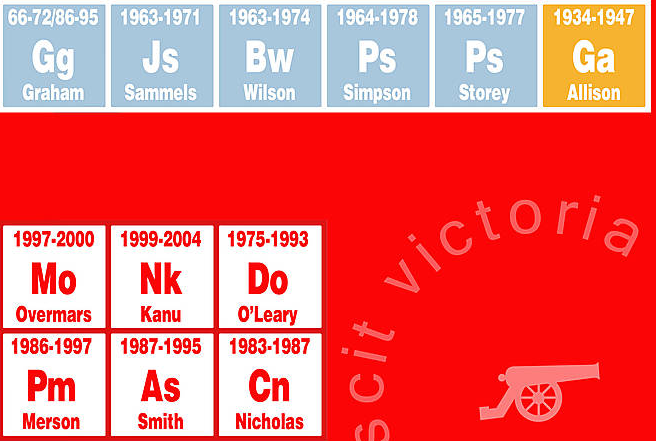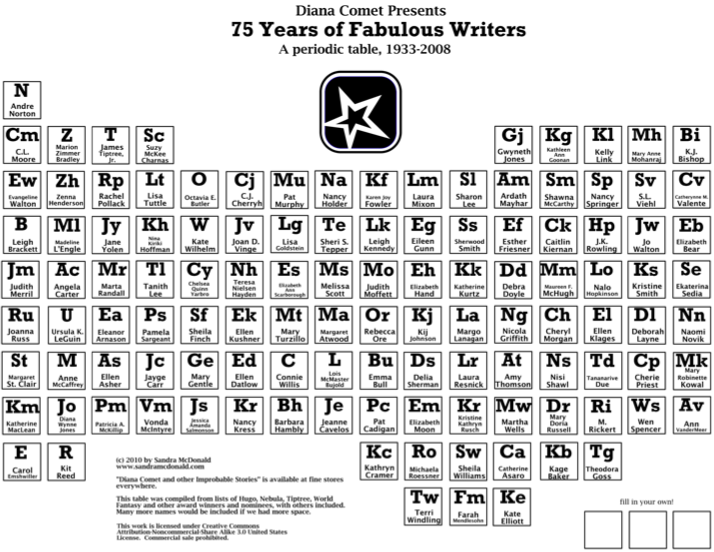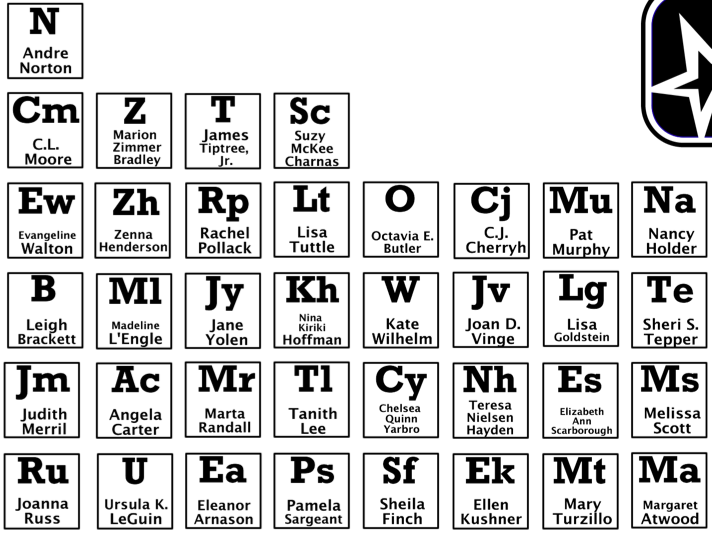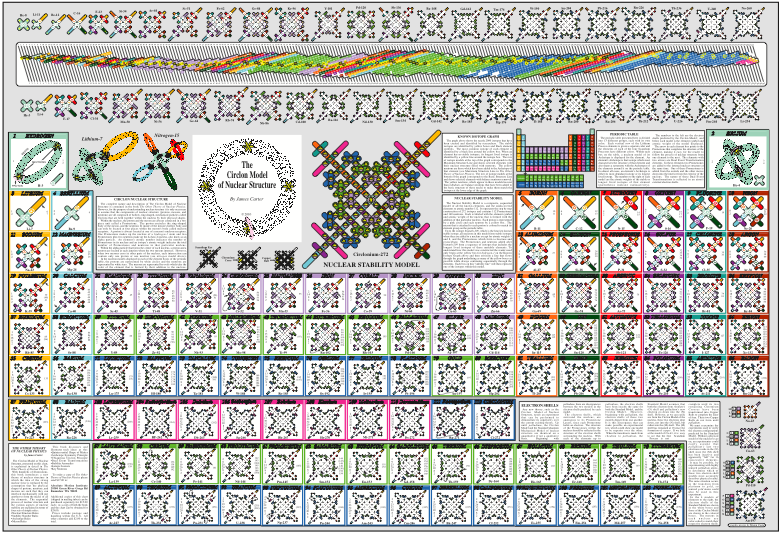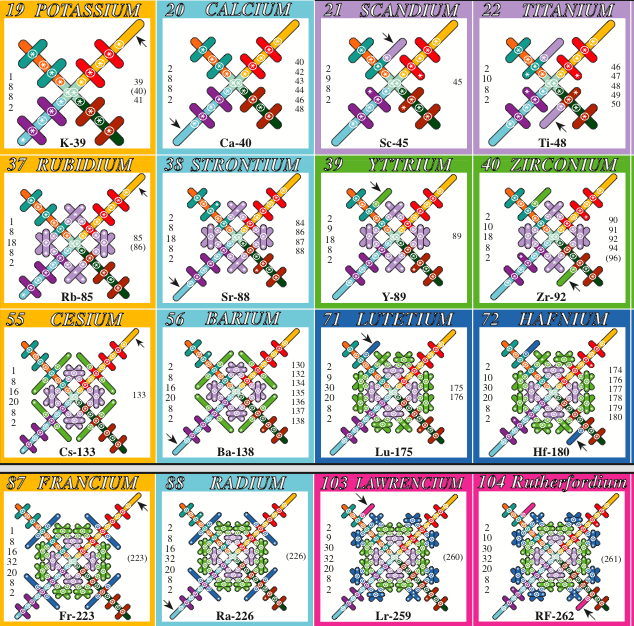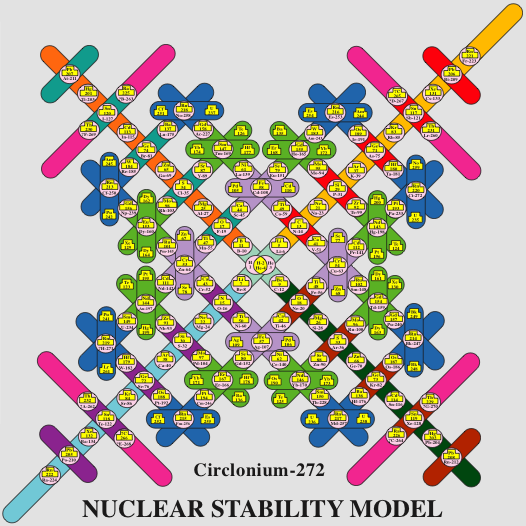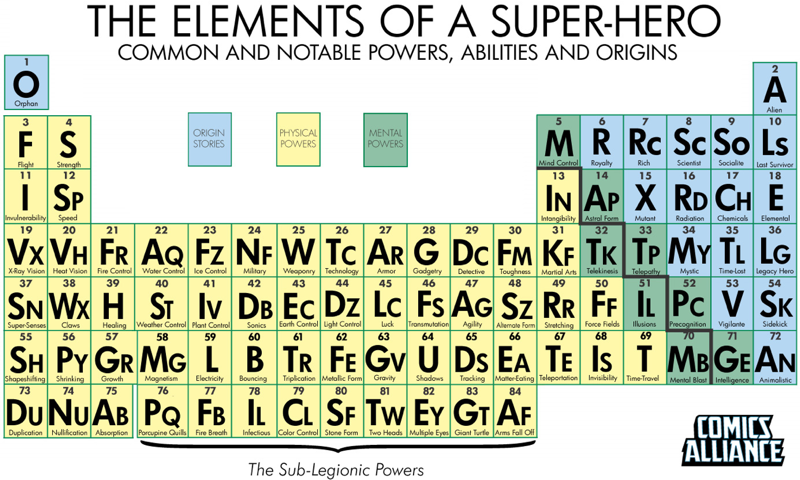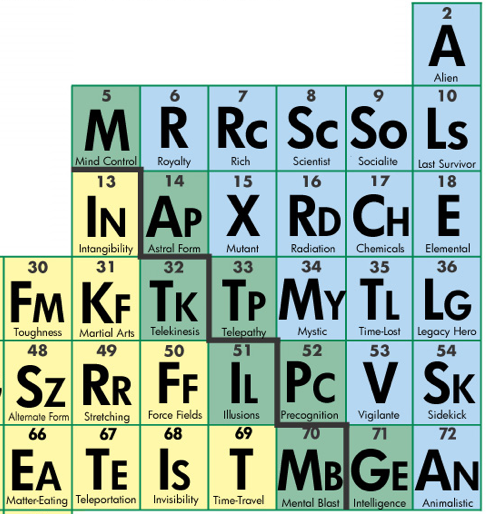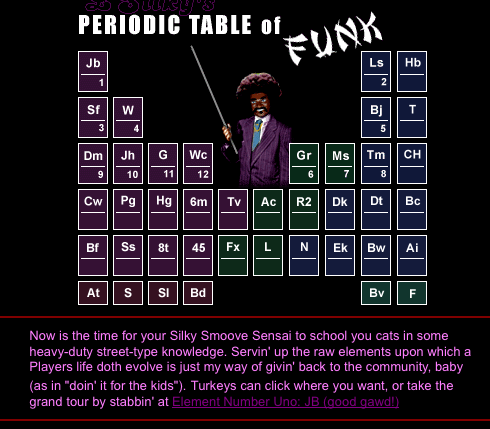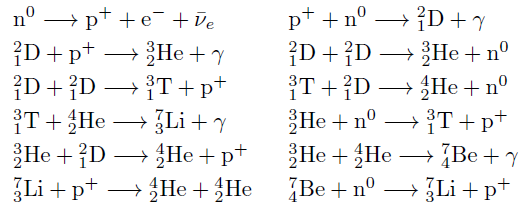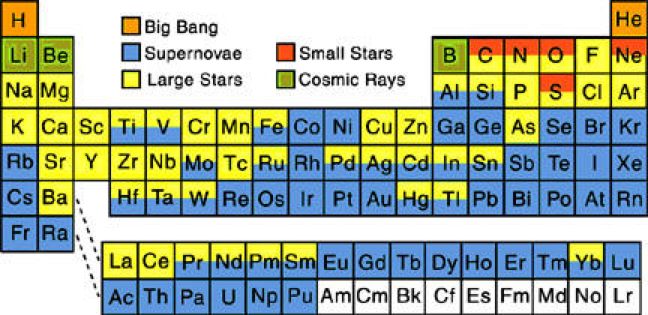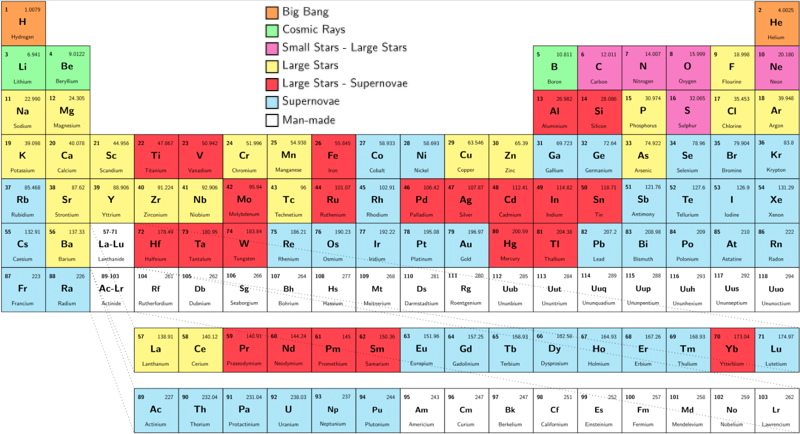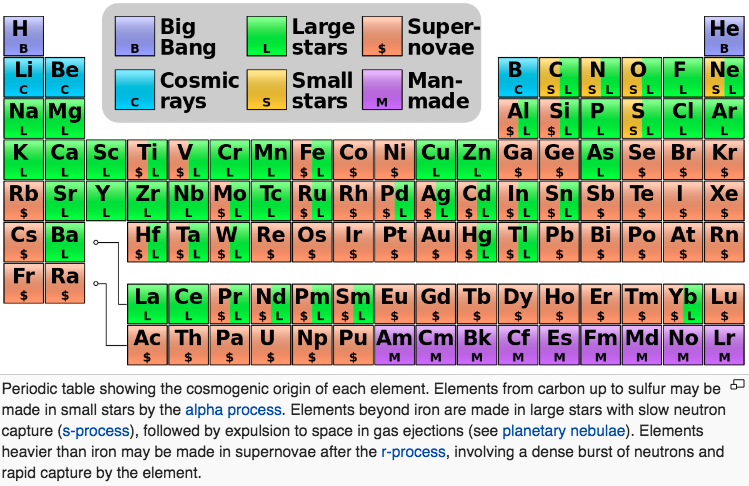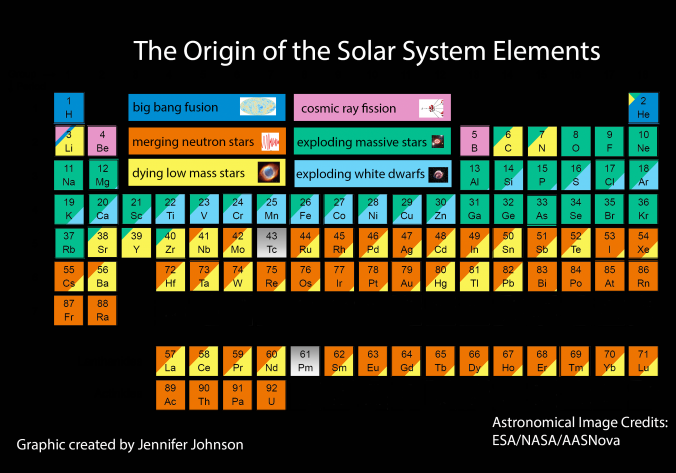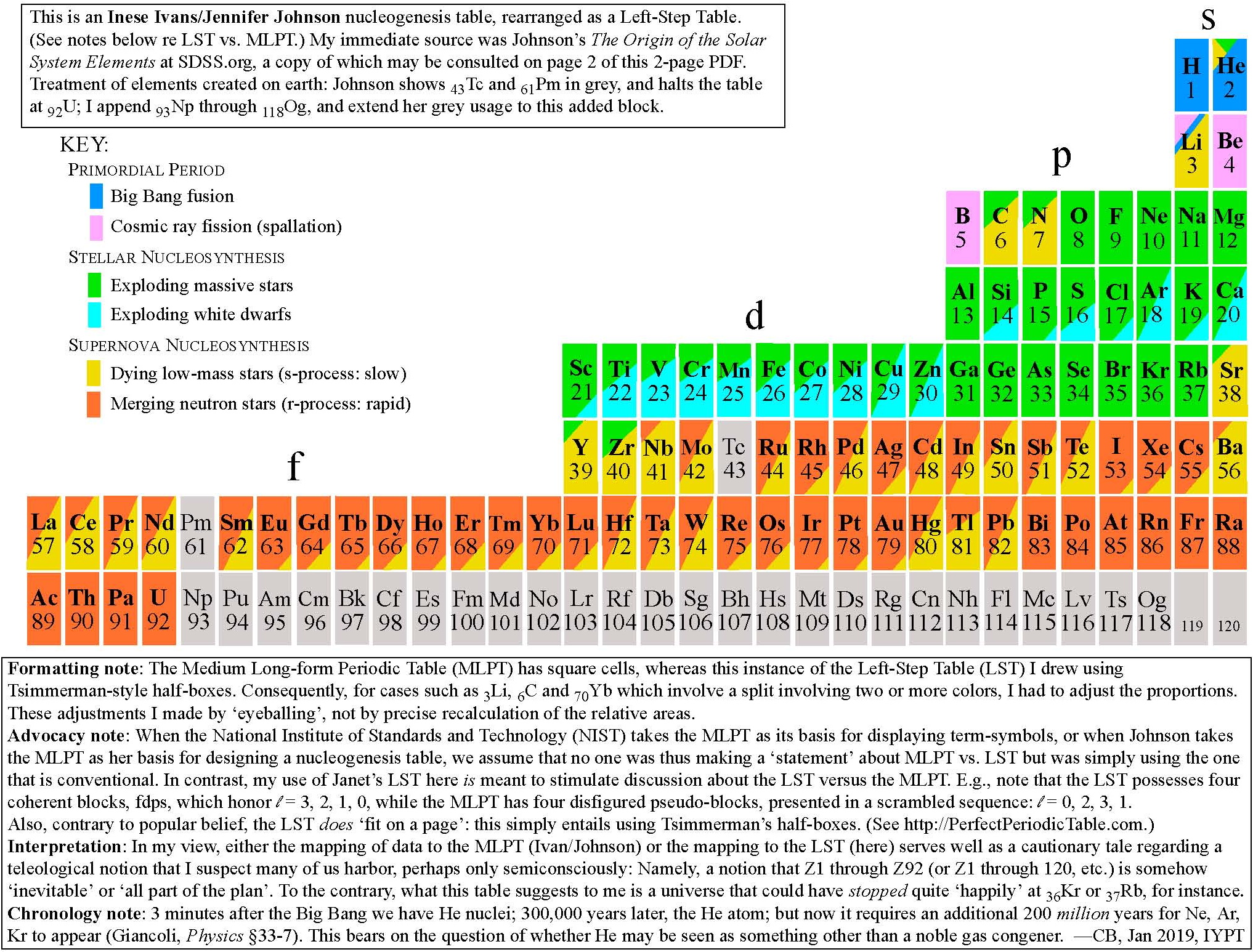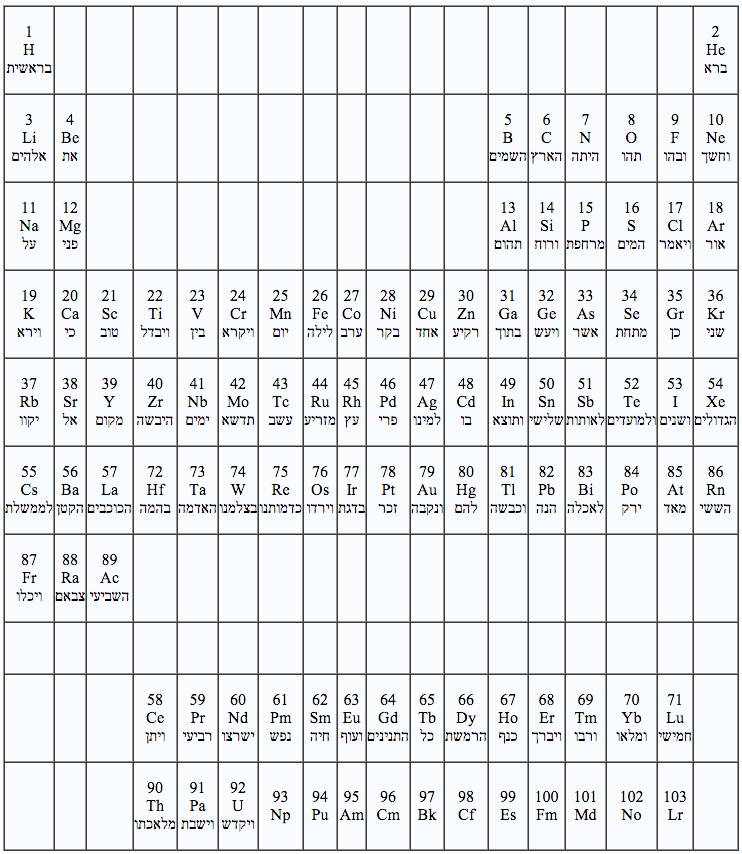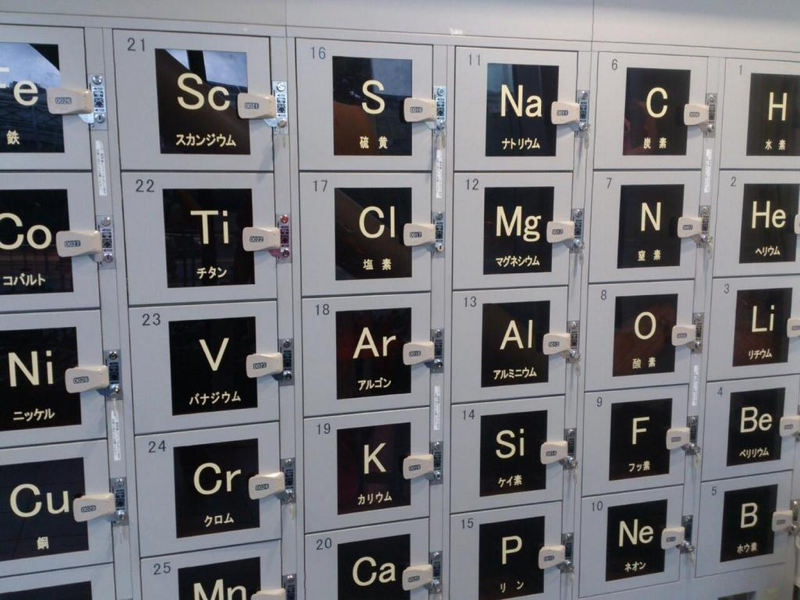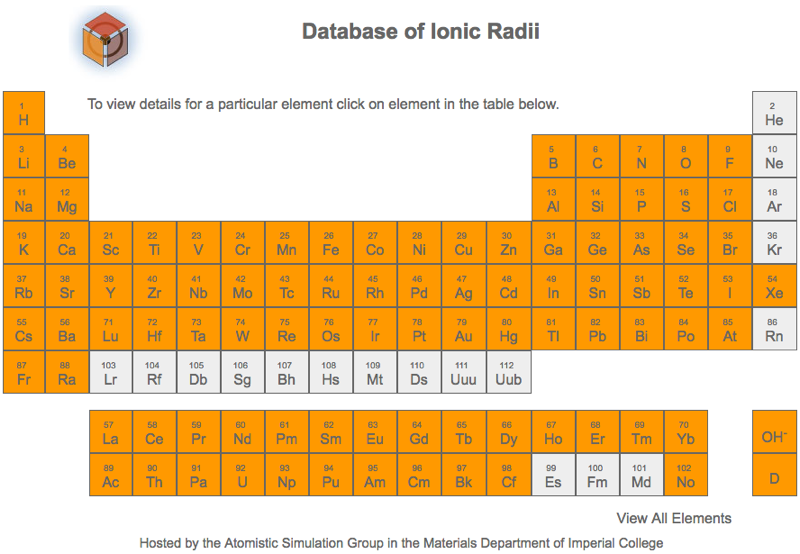Periodic Table |
 |
 |
 |
 |
 |
 |
 |
| What is the Periodic Table Showing? | Periodicity |
The INTERNET Database of Periodic Tables
There are thousands of periodic tables in web space, but this is the only comprehensive database of periodic tables & periodic system formulations. If you know of an interesting periodic table that is missing, please contact the database curator: Mark R. Leach Ph.D.
Use the drop menus below to search & select from the more than 1300 Period Tables in the database:
- SEARCH:
- By Decade
- By Type
-
Pre-Selected
Best Four Periodic Tables for Data All Periodic Tables by Name All Periodic Tables by Date All Periodic Tables by Reverse Date All Periodic Tables, as Added to the Database All Periodic Tables, reverse as Added Elements by Name Elements by Date Discovered Search for: Mendeleev/Mendeléeff Search for: Janet/Left-Step Search for: Eric Scerri Search for: Mark Leach Search for: René Vernon Search for: Electronegativity
-
By Year
2025 2024 2023 2022 2021 2020 2019 2018 2017 2016 2015 2014 2013 2012 2011 2010 2009 2008 2007 2006 2005 2004 2003 2002 2001 2000 1999 1998 1997 1996 1995 1994 1993 1992 1991 1990 1989 1988 1987 1986 1985 1984 1983 1982 1981 1980 1979 1978 1977 1976 1975 1974 1973 1972 1971 1970 1969 1968 1967 1966 1965 1964 1963 1962 1961 1960 1959 1958 1957 1956 1955 1954 1953 1952 1951 1950 1949 1948 1947 1946 1945 1944 1943 1942 1941 1940 1939 1938 1937 1936 1935 1934 1933 1932 1931 1930 1929 1928 1927 1926 1925 1924 1923 1922 1921 1920 1919 1918 1917 1916 1915 1914 1913 1912 1911 1910 1909 1908 1907 1906 1905 1904 1903 1902 1901 1900 1899 1898 1897 1896 1895 1894 1893 1892 1891 1890 1889 1888 1887 1886 1885 1884 1883 1882 1881 1880 1879 1878 1877 1876 1875 1874 1873 1872 1871 1870 1869 1868 1867 1866 1865 1864 1863 1862 1861 1860 1859 1858 1857 1856 1855 1854 1853 1852 1851 1850 1844 1843 1842 1838 1836 1831 1830 1829 1825 1824 1817 1814 1813 1811 1808 1807 1804 1803 1802 1801 1800 1798 1794 1791 1789 1787 1783 1782 1781 1778 1775 1774 1772 1771 1766 1753 1751 1748 1735 1718 1700 1690 1687 1682 1671 1669 1624 1617 1520 1000 -300 -450 -800 -1000 -2000 -3500 -3750 -5000 -6000 -7000 -9000
Periodic Tables from the year 2010:
| Year: 2010 | PT id = 180, Type = non-chem |
Sentiments
A periodic table of sentiment cards by pinklovesbrown:
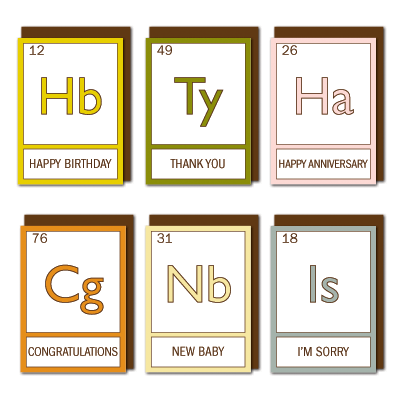
| Year: 2010 | PT id = 185, Type = non-chem |
Colorments
A Periodic Table of Colorments.
From Colourlovers "Here you can find all the elements on the periodic table represented by a mere 5 colors. Some have the inspiration image posted while others were purely plucked from the depths of my scientific being. Hours of research went into all of these so, enjoy!":
| Year: 2010 | PT id = 217, Type = misc |
Classical Periodic Table
A periodic table of the classical elements: air, fire, earth, water & aether available as a t-shirt:
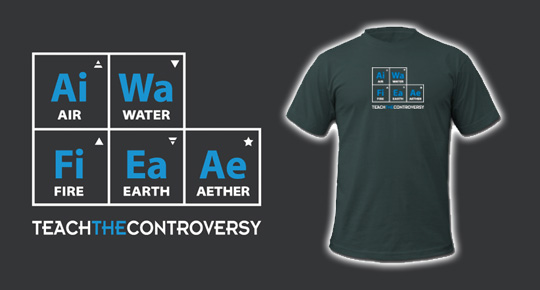
Or, just air, fire, earth, water, the 'old school' elements from here:
| Year: 2010 | PT id = 277, Type = formulation misc non-chem |
Periodic Arch of The Elements
Cynthia K. Whitney of Galilean Electrodynamics writes: "In his paper Explaining the periodic table, and the role of chemical triad, Eric Scerri mentioned the existence of at least four different candidate places for Hydrogen: Group 1 (alkali metals - Lithium, etc.), Group 17 (halogens - Fluorine, etc.), Group 14 (Carbon, etc.), or off the Periodic Table entirely, because it is so odd! The four-fold multiplicity (and maybe more) of candidate places for Hydrogen triggered in me the following thought: the excessive multiplicity of candidate places may have to do with the rectangular nature of the Periodic Tables under consideration there." Read more in this pdf file.
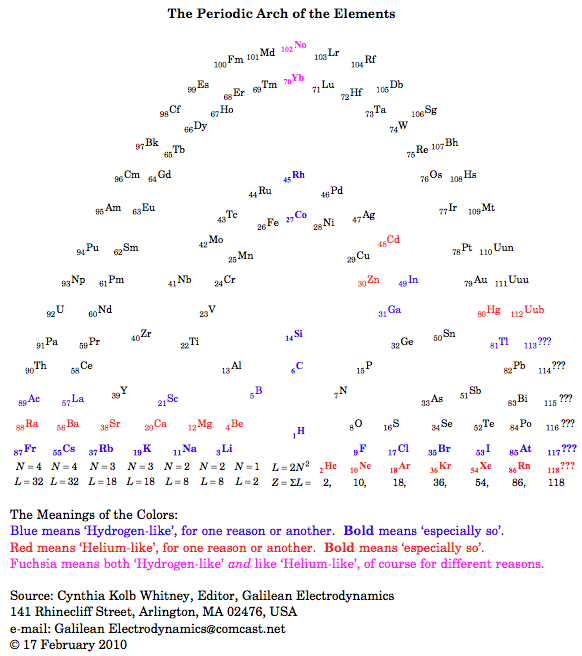
| Year: 2010 | PT id = 279, Type = formulation misc 3D |
3-D Strange Periodic Table
As Lewis Page of The Register puts it: "Top flight international reverse-alchemy boffins say they have managed to transmute gold into an entirely new form of 'negatively strange' antihypernucleic antimatter...", here.
The effect is to add a third dimension of quark strangeness to the periodic table. Read the abstract by the STAR Collaboration.
| Year: 2010 | PT id = 283, Type = formulation |
Marks & Marks: Newlands Revisited
Marks & Marks – The Marks bros. – published "A periodic table explicitly for chemists rather than physicists. It is derived from Newlands’ columns. It solves many problems such as the positions of hydrogen, helium, beryllium, zinc and the lanthanoids but all within a succinct format." email here
| Year: 2010 | PT id = 302, Type = review |
Before & After Mendeleev: Periodic Table Videos
Two videos by the Chemical Heritage Foundation:
- Part 1 Before Mendeleev (17min) covers the events leading up to Mendeleev's invention of the periodic table, including the work of several precursors such as de Chancourtois, Newlands, Odling, Hinrichs, and Meyer.
- Part 2 Mendeleeve & Beyond (20 min). The second part covers Mendeleev's working out of his periodic system and the work of his successors, as well as some interesting questions such as whether the periodic table can be entirely deduced from quantum mechanics and the mystery of the Knight's Move pattern of properties.
The videos feature interviews with Dr. Eric Scerri of UCLA, with added narration, animations, illustrations, photos, captions, etc. by David V. Black as well as publication artwork and notes by Edward G. Mazurs.
| Year: 2010 | PT id = 304, Type = formulation misc |
Periodic Table of Periodic Tables
Keaggy, of www.keaggy.com, has put together a rather cool 'Periodic Table of Periodic Tables', clearly using this web site as one of the major resources:
| Year: 2010 | PT id = 306, Type = non-chem |
Wisdom Table
Periodic Table of the World's Religions & Philosophical Traditions - by Dr. Thomas C. Daffern, Director, IIPSGP - www.educationaid.net www.lulu.com/iipsgp (Copyright 2009).
The Wisdom Pages are hosting a Periodic Table of the Worlds Religious and Philosophical Traditions or Wisdom Table for short. It can be viewed by following the website link below. If you click in any box on the table it takes you to a database behind giving more information. We are still currently adding to this database however it is nearly complete.:
| Year: 2010 | PT id = 309, Type = non-chem |
Elements of Videogames, Illustrated
From the Lizzy wanders blog, here:
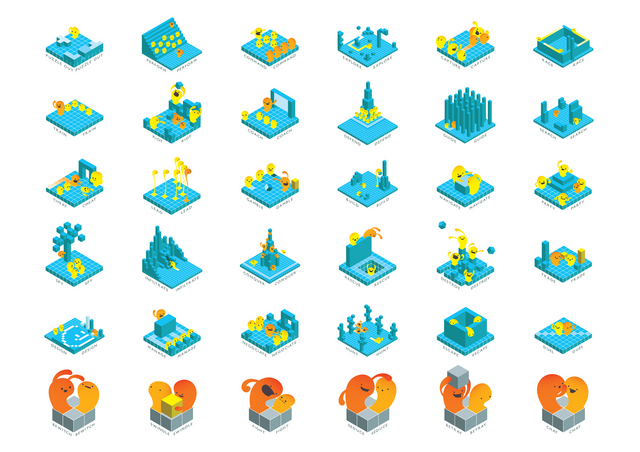
| Year: 2010 | PT id = 310, Type = non-chem |
Chucknorium
Chucknorium, the most dangerous element in the whole universe, here:
| Year: 2010 | PT id = 316, Type = review |
Disappearing Spoon
The Disappearing Spoon is a 2010 book by Sam Kean:
"The Periodic Table is one of our crowning scientific achievements, but it's also a treasure trove of passion, adventure, betrayal, and obsession. The fascinating tales in The Disappearing Spoon follow carbon, neon, silicon, gold, and every single element on the table as they play out their parts in human history, finance, mythology, conflict, the arts, medicine, and the lives of the (frequently) mad scientists who discovered them: Why did a little lithium help cure poet Robert Lowell of his madness? And how did Gallium (Ga, 31) become the go-to element for laboratory pranksters?"
"The Disappearing Spoon has the answers, fusing science with the classic lore of invention, investigation, discovery, and alchemy, from the Big Bang through the end of time."
| Year: 2010 | PT id = 318, Type = data |
Dynamic Periodic Table
Michael Dayah's Dynamic Periodic Table, in development since 1997, is a traditional data presentation periodic table with a beautiful, flexible & fast user interface.
For example, when selecting "MP", "BP", "Discovery", etc. a slider appears and the PT changes in colour dynamically to reflect the change. PDF and PNG versions can be downloaded:
Highly recommended!
| Year: 2010 | PT id = 319, Type = formulation spiral |
Tai Chi Periodic Table
Joyous Wong, ![]() , a student at the Hebei Normal University, China presents a periodic table based on the Chinese cultural background of Tai Chi:
, a student at the Hebei Normal University, China presents a periodic table based on the Chinese cultural background of Tai Chi:
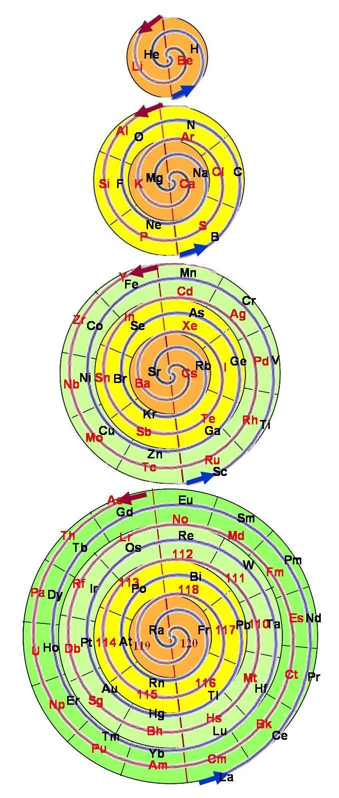 |
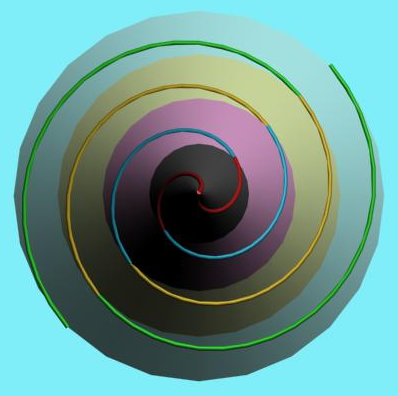 |
| Year: 2010 | PT id = 320, Type = non-chem |
Meat Periodic Table
From the Pleated-Jeans blog:
"Scientists have long referred to meat as 'the building blocks of delicious meals'. In an effort to catalog the world's most popular (and unpopular) types of meat into an informative and easy-to-reference tabular form, I give you the The Periodic Table of Meat":
| Year: 2010 | PT id = 323, Type = non-chem |
Manchester United Periodic Table
The Manchester United Periodic Table T-Shirt: The history of Manchester United, arranged in the style of chemistry's periodic table of the elements. From Charlie Roberts to Wayne Rooney via everyone from Harry Gregg to Ralph Milne and Dennis Violett to Denis Irwin.
Showing Man United's greatest, best loved and most infamous players in each position as well as the two greatest managers in the history of the club: Sir Matt Busby and Sir Alex Ferguson.
Also featuring two of the most famous teams in history in their entirety: the team that perished at Munich and the one which won the treble in 1999..
| Year: 2010 | PT id = 325, Type = formulation misc data |
Recipe For A Human Shirt
By Sean Fallon and available from Fashionably Geek, A Recipe For Humans Shirt:
| Year: 2010 | PT id = 326, Type = non-chem |
Brand Evolution Terms
By Kolbrener, a Periodic Table of Brand Evolution Terms:
| Year: 2010 | PT id = 327, Type = non-chem |
Coiled Coils
CC+, a relational database of coiled-coil protein structures. This database has been developed to help probe understanding of the sequence-to-structure relationships:
| Year: 2010 | PT id = 328, Type = non-chem |
Caffine Beverages
A Periodic Table of Caffine Beverages:
| Year: 2010 | PT id = 329, Type = non-chem |
Business Periodic Table
The Periodic Table of Business shows 384 base or generic Performance Markers. These are arranged and placed on the Periodic Table strategically, by business function and layer in the business, or hierarchy:
| Year: 2010 | PT id = 334, Type = data |
NIST Atomic Physical Reference Data
Access the NIST (National Institute of Standards and Technology) physical reference data:
| Year: 2010 | PT id = 335, Type = data misc |
Lewis Octet Periodic Table
A periodic table showing the outer shell of valence electrons associated with Lewis atoms:
By Mark Leach
| Year: 2010 | PT id = 340, Type = non-chem |
HTML 5 Elements, Periodic Table of
This table, from the Josh Duck blog, shows the 104 elements currently in the HTML5 working draft and two proposed elements (marked with an asterisk).
| Year: 2010 | PT id = 341, Type = non-chem |
Elemental Table of the Period
Called "Elemental Table of the Period", this is a mixed media on panel artwork by Faith Cavendish on the HoldUp website.
Look closely, and many of the elements symbols have been moved, duplicated or invented:
| Year: 2010 | PT id = 342, Type = formulation |
Jovanovic's 2D Periodic Table
Jovanovic's 2D Periodic Table is based on the atomic number Z and the electron configuration of the elements. There is a full explanatory pdf file on the website:
| Year: 2010 | PT id = 350, Type = formulation spiral |
Fahimi Formulations
Peyman Fahimi has posted some periodic table formulations to www.img98.com, these can be found here, here, here, here & here:
The two most interesting are are shown below:
| Year: 2010 | PT id = 351, Type = formulation |
Vajra Periodic Table
The Vajra Periodic Table, which can be found at APM Periodic Tables, lays out according to electron orbitals and thus gives insights into the electron structure surrounding the nucleus. The nucleus organizes with different rules and thus a different periodic table is needed to visualize the nuclear bindings:
| Year: 2010 | PT id = 352, Type = formulation |
Pauling Spheron Periodic Table
The Pauling Spheron Periodic Table, can be found at APM Periodic Tables.
Linus Pauling was a brilliant physicist who tended to think outside the mainstream. One of his many contributions to science was his spheron model for the nucleus. The word "spheron" does not mean the nucleus is spherical (although it may be), it refers to Pauling's idea that clusters might form in the nucleus. For example, a nucleus may contain a stable helium nucleus within a larger uranium nucleus. Thus, when uranium decays, it releases a helium atom. Other elements, such as oxygen, may also cluster within larger elements. This makes sense since certain atoms like helium and oxygen are more strongly bound than other elements:
| Year: 2010 | PT id = 354, Type = formulation data |
Bing Periodic Table
Microsoft's Bing search engine has a rather extensive way of finding element data & information that avoids any formal PT representation:
| Year: 2010 | PT id = 355, Type = formulation |
Pyykkö's Extended Elements
From an RSC new page: Pekka Pyykkö at the University of Helsinki has used a highly accurate computational model to predict electronic structures and therefore the periodic table positions of elements up to proton number 172 - far beyond the limit of elements that scientists can currently synthesise.
From the paper, A suggested periodic table up to Z = 172, based on Dirac-Fock calculations on atoms and ions:
| Year: 2010 | PT id = 356, Type = non-chem |
Baseball Hall of Famers
From Wired: When it comes to central repositories of awesomeness, science has its Periodic Table of Elements. Baseball has its Hall of Fame. And now, an unlikely marriage between the two has been fashioned.
Larry Granillo, who runs the über-awesome Wezen Ball, took it upon himself to essentially mash up the Periodic Table (which currently boasts 118 known elements) with those who've been formally voted into baseball's most elite circle (109 members, to date). With a little categorizing and a whole lot of inventiveness, Granillo came up with the definitive classification system of baseball legends.
Click to embiggen:
| Year: 2010 | PT id = 357, Type = formulation spiral |
Harrison Spiral Periodic Table
This spiral, inspired by Stewart's Chemical Galaxy, is based on the modern periodic table with the elements strictly arranged in the increasing order of their atomic number and in accordance with their electron configurations.
The spiral separates the elements into the eight dominant 'A' groups of normal elements, and the eight corresponding 'B' subgroups of transitional and inner transitional elements, which have been incorporated as the inner spiral. The organisation of the elements closely follows H.G. Deming's 1923 Periodic Table where A B numeration was first utilized to correspond the characteristic oxides of the 'B' groups to those of the 'A' groups. The result of this design places Group VIII, the triads Fe, Co, Ni, etc. as a subgroup of Group 0 (or 18 Helium Group) which conflicts with some modern periodic tables, though broadly agrees with Deming's original proposal (VIIIA and VIIIB).
Hydrogen, which generally cannot be considered as part of any group, has been placed with the Fluorine group VII which appears its natural place in the spiral. Common names have been used where practicable to make the table more educational and reader-friendly. Element symbols have been included in the expanded poster of this table.
Look at a larger PDF.
| Year: 2010 | PT id = 358, Type = formulation spiral |
Spiral of Atoms and Their Periodic Table
Page 8 of my website (in Russian) shows The Spiral of Atoms and Their Periodic Table, which depicts a spiral disk of atoms with a periodic table of their relative masses.
This information clarifies the options published in the editions of my book The Axiomatics of Nature (2007-2009). Mark Adelman Samuilovich (Mark S. Eidelman)
| Year: 2010 | PT id = 359, Type = non-chem |
Revised Periodic Table
From Spelling Mistakes Cost Lives Dot Com, a heavily Revised Periodic Table:
| Year: 2010 | PT id = 362, Type = formulation data |
Cartogram Periodic Tables
Webelements have produced a poster with various atomic & elemental properties represented in cartographic form. From the Webelements shop:
"Periodic table cartograms are periodic table grids distorted using a computer algorithm so that the areas of the element squares are in proportion to a periodic table property. This is the first poster to show periodic properties plotted in this way".
| Year: 2010 | PT id = 370, Type = review |
Rare Earths in the Periodic Table
CRC Handbook on the Physics and Chemistry of Rare Earths, Chapter 248. Accommodation of the Rare Earths in the Periodic Table: A Historical Analysis by Pieter Thyssen and Koen Binnemans (ISBN: 978-0-444-53590-0):
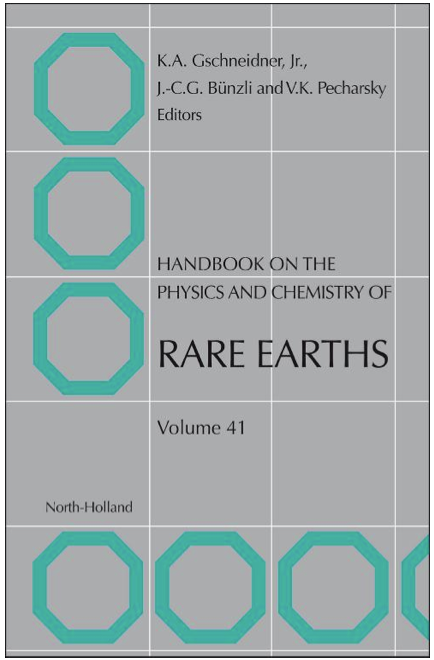
| Year: 2010 | PT id = 371, Type = formulation |
Scandium Group and The Periodic Table: Sc, Y, Lu, Lr or Sc, Y, La, Ac?
Pieter Thyssen and Koen Binnemans discuss (CRC Handbook on the Physics and Chemistry of Rare Earths, Chapter 248. Accommodation of the Rare Earths in the Periodic Table: A Historical Analysis) the confusion surrounding the members of and the positioning of the scandium group. There are three forms commonly used.
A medium-long form and long form depiction of the 15LaAc periodic table. As should be clear from the long form periodic table, an intermingling occurs between the f-block and d-block:
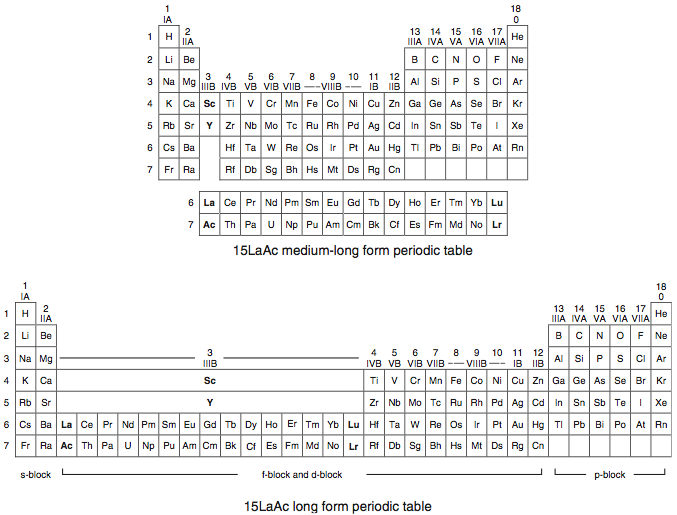
A medium-long form and long form depiction of the 14CeTh periodic table. The d-block has been torn apart in the long form, due to the insertion of the f-block:
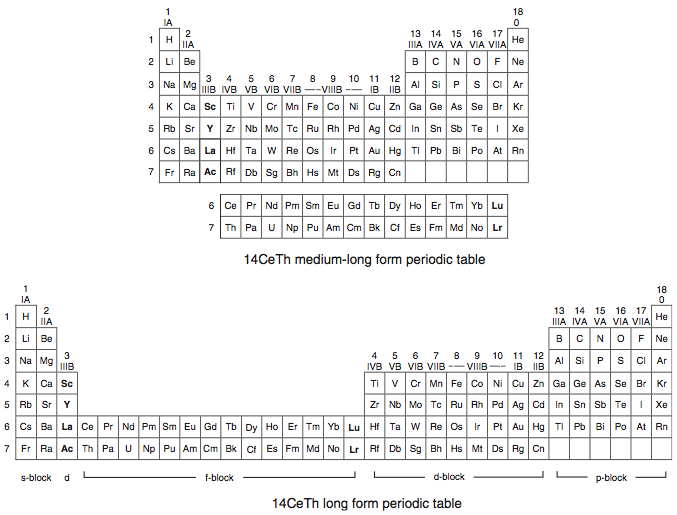
A medium-long form and long form depiction of the 14LaAc periodic table. The 14LaAc periodic table is in perfect agreement with the Madelung rule:
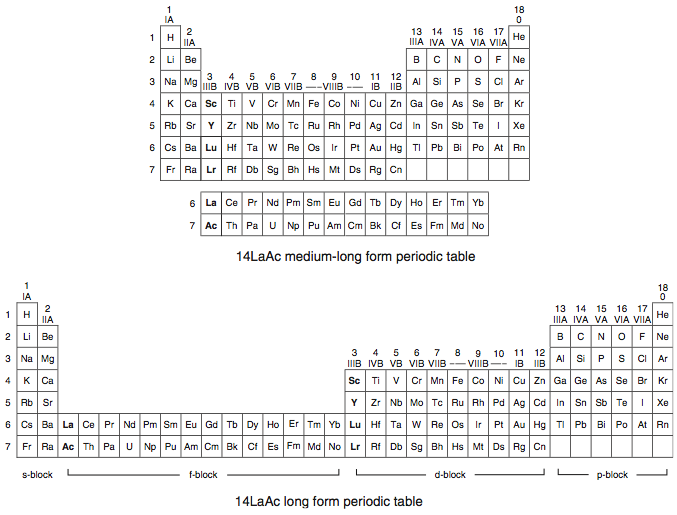
A recent graphic posted by Eric Scerri:
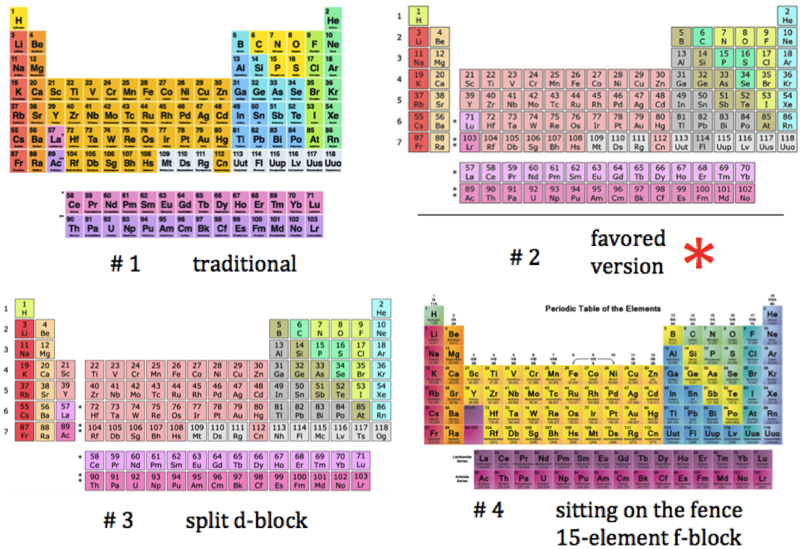
| Year: 2010 | PT id = 374, Type = data misc |
Compilation of Minimum and Maximum Isotope Ratios of Selected Elements
Documented variations in the isotopic compositions of some chemical elements are responsible for expanded uncertainties in the standard atomic weights published by the Commission on Atomic Weights and Isotopic Abundances of the International Union of Pure and Applied Chemistry.
This report summarizes reported variations in the isotopic compositions of 20 elements that are due to physical and chemical fractionation processes (not due to radioactive decay) and their effects on the standard atomic weight uncertainties. For 11 of those elements (hydrogen, lithium, boron, carbon, nitrogen, oxygen, silicon, sulfur, chlorine, copper, and selenium), standard atomic weight uncertainties have been assigned values that are substantially larger than analytical uncertainties because of common isotope abundance variations in materials of natural terrestrial origin. For 2 elements (chromium and thallium), recently reported isotope abundance variations potentially are large enough to result in future expansion of their atomic weight uncertainties. For 7 elements (magnesium, calcium, iron, zinc, molybdenum, palladium, and tellurium), documented isotope-abundance variations in materials of natural terrestrial origin are too small to have a significant effect on their standard atomic weight uncertainties.
Compilation of Minimum and Maximum Isotope Ratios of Selected Elements in Naturally Occurring Terrestrial Materials and Reagents
This report is available as a pdf.
U.S. GEOLOGICAL SURVEY
Water Resources Investigation Report 01-4222
| Year: 2010 | PT id = 375, Type = formulation data |
Upper Limit in Mendeleev's Periodic Table - Element No.155
This book (PDF), by Albert Khazan, represents a result of many-year theoretical research, which manifested hyperbolic law in Mendeleev's Periodic Table.
According to [Khazan's] law, an upper limit (heaviest element) exists in Mendeleev's Table, whose atomic mass is 411.66 and No.155. It is shown that the heaviest element No.155 can be a reference point in nuclear reactions. Due to symmetry of the hyperbolic law, the necessity of the Table of Anti-Elements, consisting of anti-substance, has been predicted. This manifests that the found hyperbolic law is universal, and the Periodic Table is common for elements and anti-elements.
| Year: 2010 | PT id = 377, Type = formulation misc data |
World's Smallest Periodic Table
The World's Smallest Periodic Table:
| Year: 2010 | PT id = 382, Type = misc non-chem |
Imaginary Elements
An image of a Periodic Table Imaginary Elements by Russell Walks:
| Year: 2010 | PT id = 384, Type = non-chem |
Russian Periodic Table of Alcoholic Beverages
A Russian Periodic Table of alcoholic beverages. I don't speak Russian but my guess is that V = vodka:
| Year: 2010 | PT id = 386, Type = data |
Chemical Elements as a Collection of Images
Using Google Translate (German -> English):
"The periodic table of chemical elements as a collection of images [click to zoom in]. A collection of images of materials constitute the basic components of the whole universe. This is a periodic table of chemical elements (also called short PSE) with a difference! Visible in pure form, as it really looks like. Not only naked dry boring data. There are the alkali metals, alkaline earth metals, boron group, carbon group, nitrogen group, chalcogens, halogens, noble gases, hard metals, ferrous metals, precious metals, lanthanides..." from the website, here:
| Year: 2010 | PT id = 388, Type = formulation misc |
Khipu or Quipu Periodic Table
The Khipu or Quipu or Talking Knot Periodic Table, developed by Julio Antonio Gutierrez Samanez.
Google translated from the Spanish pdf file:
"As a result of bringing together each pair of periods in a single function or binod, the author has found a new regular on the subject, which has been defined as a new quantum number, since the number of orders or regulations binod growth elements in the table, under the appearance of pairs of new types of quantum structures or periods whose organization responds to a simple mathematical function: a parable of the type Y = 4 X ^ 2 - In this case report: a) That the strings correspond to pairs of periods or binod and knots are double for items with orbital s (in red), six nodes for p in orange, 10 yellow d knots and 14 knots for green f . b) That in each binod or rope, appear regularly in pairing mode or dual, new quantum or orbital structures, such as moving from within the orbital previous binod.":
| Year: 2010 | PT id = 390, Type = non-chem |
Hipsters Periodic Table
| Year: 2010 | PT id = 394, Type = non-chem |
Cars, Periodic Table of
A Periodic Table of Cars from the CARnivorousness blog:
| Year: 2010 | PT id = 395, Type = non-chem |
City Planning Periodic Table
A Periodic Table of City Planning:
| Year: 2010 | PT id = 396, Type = non-chem |
Max with Genseng Periodic Table (Advert)
A Wake Up! Pepsi Max with Ginseng soft drink periodic table advertisment, from this sequence:
| Year: 2010 | PT id = 398, Type = non-chem |
Sports Cars, Periodic Table of
A periodic table of Sports Cars from Car and Driver:
| Year: 2010 | PT id = 399, Type = formulation spiral |
Circular Periodic Table of Elements
Michael Paukner's circular periodic table is one alternative to the standard periodic table of the elements:
| Year: 2010 | PT id = 400, Type = non-chem |
Mad Men Periodic Table
From Flavorwire, a Mad Men periodic table.
Click here to see the full size version. Graphic by Emily Miethner:
| Year: 2010 | PT id = 401, Type = non-chem |
Professional Cycling Periodic Table
The Cyclocosm blog made a nice Periodic Table of Professional Cycling wall poster.
All cycling events of 2010 are on this calendar organized by location, prestige and format. It’s a little bit late in the season, but I think they will make one for 2011:
| Year: 2010 | PT id = 408, Type = non-chem |
Teachinghearts Periodic Table
From the Teachinghearts website:
"Science and religion intersect in the realm where the language is signs, symbols and miracles, because only miracles are universally useful as signs. However, each abides by the same set of physical rules and laws making religion or knowledge about God a legitimate science. Religion completes physical scientific knowledge because it further explains the moral rules that govern interpersonal relationships in the mental and spiritual realms. Religion is both very good and very bad at explaining the moral laws such as the ten commandments. However, in this article, we are not attempting to explain those laws, we are attempting to show that the physical laws that science relies on are not incompatible with God. He made them. So physical laws actually reside within the larger realm of spiritual laws..." and heaps more of this tosh...
| Year: 2010 | PT id = 415, Type = non-chem |
Fake Science Periodic Table
Fake Science provides bonkers theories about our world, including the 'fact' that the periodic table is based on the popular board game Scrabble:
| Year: 2010 | PT id = 420, Type = non-chem |
Empire Strikes Back, Periodic Table of
From Blastr, with art design by Chris Kalba, comes a Periodic Table of The Empire Strikes Back:
| Year: 2010 | PT id = 421, Type = non-chem |
David Bradley's Periodic Table of Science Bloggers
David Bradley, of ScienceBase, has constructed a Periodic Table of Science Bloggers:
| Year: 2010 | PT id = 424, Type = non-chem |
Arsenal Periodic Table
From ebay, "118 of Arsenal's greatest players and managers in a periodic table, along with the years they played for the club. Specifically designed so the top 24 Arsenal players are listed seperately in the box below the main table, this is a fantastic poster that would grace the wall of any Arsenal fan":
| Year: 2010 | PT id = 427, Type = non-chem |
Diana Comet Presents: 75 Years of Fabulous Writers. A Periodic Table, 1933-2008
Sandra McDonald has produced a Diana Comet Presents: 75 Years of Fabulous (women) Writers, A Periodic Table, 1933-2008 here:
| Year: 2010 | PT id = 469, Type = formulation spiral 3D |
Harrington Projection for The 270 AMU Structure
From Bill Harrington, Founder/CTO of Rainforest Reactor Research and Temporal Dynamics Laboratory, comes a Harrington Projection for The 270 AMU Structure :
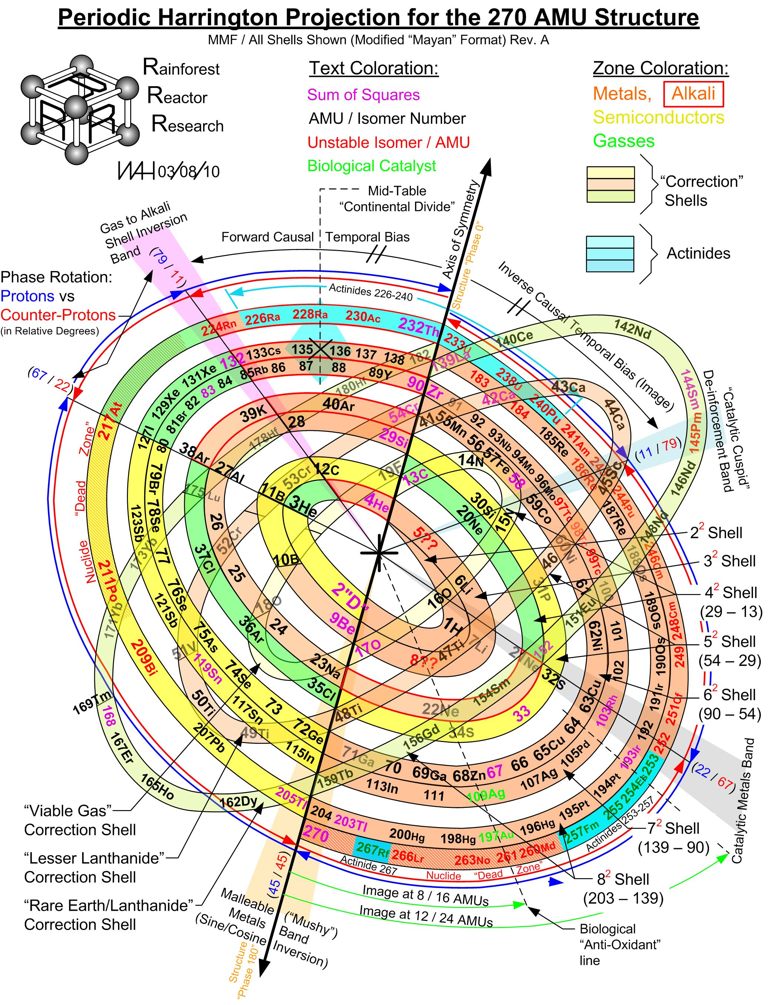
| Year: 2010 | PT id = 507, Type = misc formulation |
Neutronic Schema of the Elements
The Neutronic Schema of the Elements, with LATIN NOTATION by Families and Groups, by Earth/matriX, Science Today, 11" x 17" laminated, color, shows each element of the periodic table with its notation in Latin letters instead of their historically accidental names and symbols:
| Year: 2010 | PT id = 523, Type = misc |
Circlon Model of Nuclear Structure & Periodic Table
The complete nature and description of The Circlon Model of Nuclear Structure is contained in the book The Other Theory of Nuclear Physics available from www.living-universe.com. However, for the purpose of understanding nuclear structure it is only necessary to assume that the components of nuclear structure (protons, mesons, and neutrons) are all composed of hollow, ring-shaped, mechanical particles called Circlons that are held together within the nucleus by their physical shapes.
Within the nucleus, the proton and the meson are always connected in a two piece unit called a Promestone. The proton encircles the ring-shaped body of the meson, and the neutrons fit inside of the meson's hollow body and can only be located at four places within the meson's body called nucleon receptors. A proton is always located at one of a meson's nucleon receptors. One Promestone makes up the nucleus of a hydrogen-1 atom and two Promestones plus two neutrons make up the helium-4 nucleus, also know as an alpha particle. An element's atomic number indicates the number of Promestones in its nucleus and an isotope's atomic weight indicates the total number of Promestones and neutrons in that particular nucleus.
Within the alpha particle that forms the center of each nucleus, a proton and a neutron are located at each junction where the two mesons intersect. However, when two mesons cross in other parts of the nucleus, each intersection can contain only one proton or one neutron (see nitrogen model above).
In the nucleon models displayed in each of the element boxes of the periodic table, the protons are represented by white circles and the neutrons are represented by white stars. The mesons are represented by ovals which take the color of the element that is formed by their addition to the nucleus:
| Year: 2010 | PT id = 527, Type = non-chem |
Knickers
What more can we say... except the Etsy link no longer works!
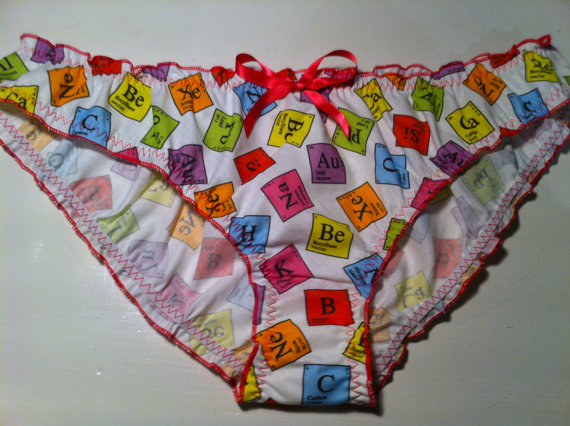
| Year: 2010 | PT id = 530, Type = non-chem |
Super-Hero Periodic Table
From Comics Alliance.com: With 70 years of super-hero comics behind us, there have been a lot of super-powers on the printed page -- so many, in fact, that even the most dedicated comics reader can occasionally have a hard time keeping them straight.
That's why ComicsAlliance senior writer Chris Sims took it upon himself to finally get things organized with The Periodic Table of Super-Powers, an arranged listing of 84 common (and decidedly uncommon) characteristics of your favorite super-heroes!
| Year: 2010 | PT id = 556, Type = non-chem |
Funk, Periodic Table of
| Year: 2010 | PT id = 593, Type = data |
Nucleosynthesis Periodic Tables
The buildup of heavy elements from lighter ones by nuclear fusion.
Helium, and some lithium, was produced by cosmic (or primordial) nucleosynthesis from 2 to 20 minitues after the Big Bang, here and here:
From the Encyclopedia of Science:
Today most element-building nucleosynthesis takes place in stars.
Stellar nucleosynthesis converts hydrogen into helium, either by the proton-proton chain or by the carbon-nitrogen-oxygen cycle. As a star evolves, a contracting superdense core of helium is produced from the conversion of hydrogen nuclei into helium nuclei.
Eventually, the temperature and pressure inside the core become high enough for helium to begin fusing into carbon. If the star has more than about twice the Sun's mass, a sequence of nuclear reactions then produces heavier elements such as oxygen, silicon, magnesium, potassium, and iron. Successively heavier elements, as far as iron (in the most massive stars) are built up in later stages of stellar evolution by the triple-alpha process. The heaviest elements of all are produced by explosive nucleosynthesis in supernova explosions, by mechanisms such as the p-process, r-process, and s-process:
From FigShare (Athanasios Psaltis):
Our quest to explain the origin of the elements started in the late 1950's by two famous papers independently - E. M. Burbidge et al., Rev. Mod. Phys. 29, 547 (1957) & A.G.W. Cameron, Pub. Astron. Soc. Pac. 69, 201 (1957) - whose authors claimed that the elements are created in astrophysical environments. This is the well-known periodic table of elements, but where each element is labeled by the environment that is created (e.g Supernova explosion etc.).
In 2017 the LIGO gravitional wave detector identified the merger of two neutron stars, an event which produces large quantities of gold, platinum etc. Thus, an updated periodic table of nucleosyntheis looks like this, from an interesting SDSS blog:
Conal Boyce has prepared a Janet Left-Step Nucleosynthesis Periodic Table. Conal writes:
"This formulation was created by mapping the Ivans/Johnson color-coding scheme onto a Janet grid, using Tsimmerman half-cells. Although several attempts to contact Professor Jennifer Johnson failed, I did receive enthusiastic feedback on this LST mapping from Professor Inese Ivans, and decided to make it public on that basis."
| Year: 2010 | PT id = 626, Type = misc |
Kabbalistic Periodic Table
A Kabbalistic periodic table from www.inner.org that attempts to link the PT with the Torah version of Genesis:
| Year: 2010 | PT id = 668, Type = misc |
Science Museum Lockers
From Kotaku:
While visiting the Nagoya City Science Museum, Twitter user Kantaku noticed something very cool, the coin lockers.
The name of each element is written below each symbol in Japanese, allowing visitors to store their belongings in Helium, Calcium, Oxygen, Potassium and more.
The number of each locker corresponds to the element. So, locker 21 is Scandium as it's the twenty-first element on the periodic table. Locker 3? It's Lithium, like it is on the periodic table, and so on. Dibs on Krypton!
Thanks to Eric Scerri for the tip!
See the website EricScerri.com and Eric's Twitter Feed
| Year: 2010 | PT id = 673, Type = formulation |
Newlands Revisited – Poster
At the beginning of last year (Meyers, 2009), a IUPAC editorial offered "something old, something new, something borrowed and something blue".
Marks and Marks 2010 (M&M) preserves the old subgroups (Newlands' columns) that were a feature of all short forms, although M&M would then have been described as a 'medium form' (14 groups) in contrast to Mendeleyev's 'short form' (8 groups) or Werner's 'long form' (32 groups). M&M naturally continues the grouping of the lanthanoids/actinoids whose initial four groups were also included in 'short form' tables.
The logic of the arrangement of the s-elements is a new feature. It recognizes the chemical subgroups of hydrogen, viz. the alkali metals and the halogens, and of helium, viz. the alkaline earth metals and the inert gases. It is interesting to note that subgroups differ chemically from each other inversely as the azimuth, i.e. Li:F > Ca:Zn > La:Lu.
The whole idea is, of course, borrowed from Newlands. The group numbers are borrowed from valency but also from electronic structure in that the number of s, p, d, or f subgroups corresponds to the Pauli maximum for each. Finally, the mnemonic reflects that most elementary introduction to chemistry: alkalis turn Litmus blue.
From this start, the p-bloc is red, the transition elements yellow and the "rare earth" elements green, as argued in the M&M paper. The numbering of groups I - XIV is unambiguous, it is less than IUPAC's arbitrary 18 groups, it preserves subgroups and satisfactorily accommodates hydrogen and the lanthanoids/actinoids.
As required by Leigh (2009), this table is clear, simple and brief.
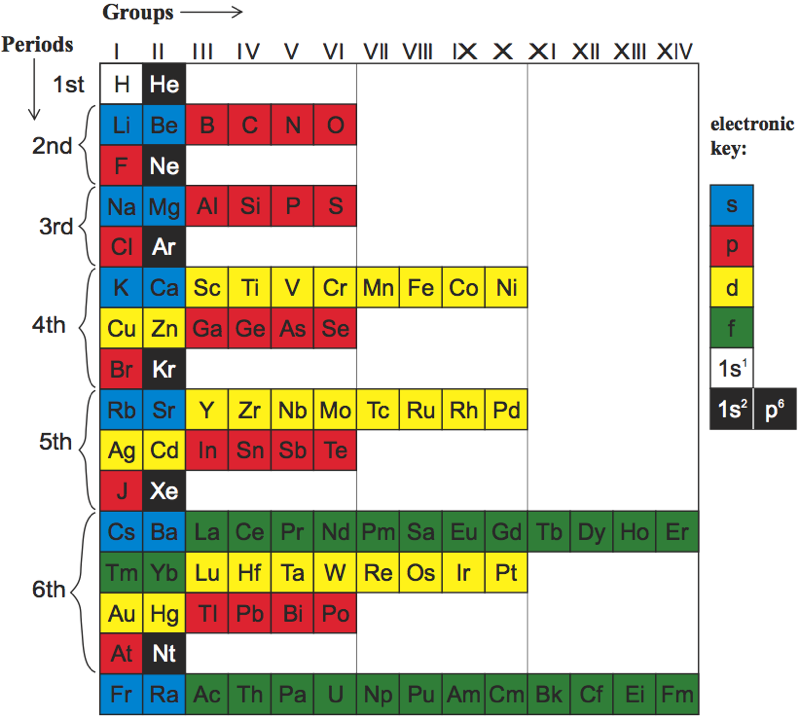
GJ Leigh "Periodic Tables and IUPAC" Chemistry International 2009, 31: 4-6. EG Marks & JA Marks "Newlands Revisited: a periodic table for chemists" Foundations of Chemistry 2010, 12: 85-93. F Meyers "From the Editor" Chemistry International 2009, 31:1-2.
| Year: 2010 | PT id = 721, Type = data |
Ionic Radii Database Periodic Table
By the Atomistic Simulation Group in the Materials Department of Imperial College, a database of ionic radii:
| Year: 2010 | PT id = 897, Type = element |
Discovery of Tennessine
Ts ![]()
Tennessine, atomic number 117, has a mass of 292 au.
Synthetic radioactive element.
Tennessine was first observed in 2010 by Y. Oganessian et al.
| Year: 2010 | PT id = 993, Type = misc |
UCL Lecturers, Periodic Table Of
This table attempts to chart the evolution of the department from its inception in 1826 to the present day through the members of academic staff who have taught here. The names appear in order of appointment. In the interests of clarity, the f-block has been suppressed in its entirety. This move in no way reflects Departmental Policy. UCL Chemistry does not discrimate against particular azimuthal quantum numbers and has no comment to make regarding elements with n > 6.
Click on a name to get details of the time they spent here and perhaps even see a picture of the person. With time we hope to include biographical information, anecdotes, lists of key publications, pictures of mountains they climbed, and other goodies from our archives. An alphabetical list is also available. Disclaimer: Positions in the chart are provisional and no conclusions concerning the moral fibre of any individual should be drawn on the basis of their position in a group or by virtue of a diagonal relationship to anyone else.
Produced by Dr Andrea Sella, with thanks to Ms Tina Simon for the design idea.
| Year: 2010 | PT id = 1195, Type = formulation data |
Schwarz & Rich's Periodic Table
W. H. Eugen Schwarz & Ronald L. Rich, Theoretical Basis and Correct Explanation of the Periodic System: Review and Update, J. Chem. Educ. 2010, 87, 4, 435-443. DOI: https://doi.org/10.1021/ed800124m
Periodic table, representing some aspects of the periodic system of chemical elements (mainly to support the discussions in [the attached] article, perhaps not for the classroom):
- Element symbol and element number Z = 0 – 118
- Period number n
- Group number G, related to the number of valence electrons
- Typical electronic valence configuration of the bound atoms ("neighbour configurations" such as s1p3 instead of s2p2 may be more important for some atoms in the group)
- Characteristic valence orbitals of highest angular momentum
- Chemical group name
- (Elements that do not belong to the group are put in parentheses.)
- The dashed lines indicate alternative or controversial group assignments, they are not meant to represent the authors' views.
Note that the richness of chemistry sometimes prevents clear-cut classifications and assignments.
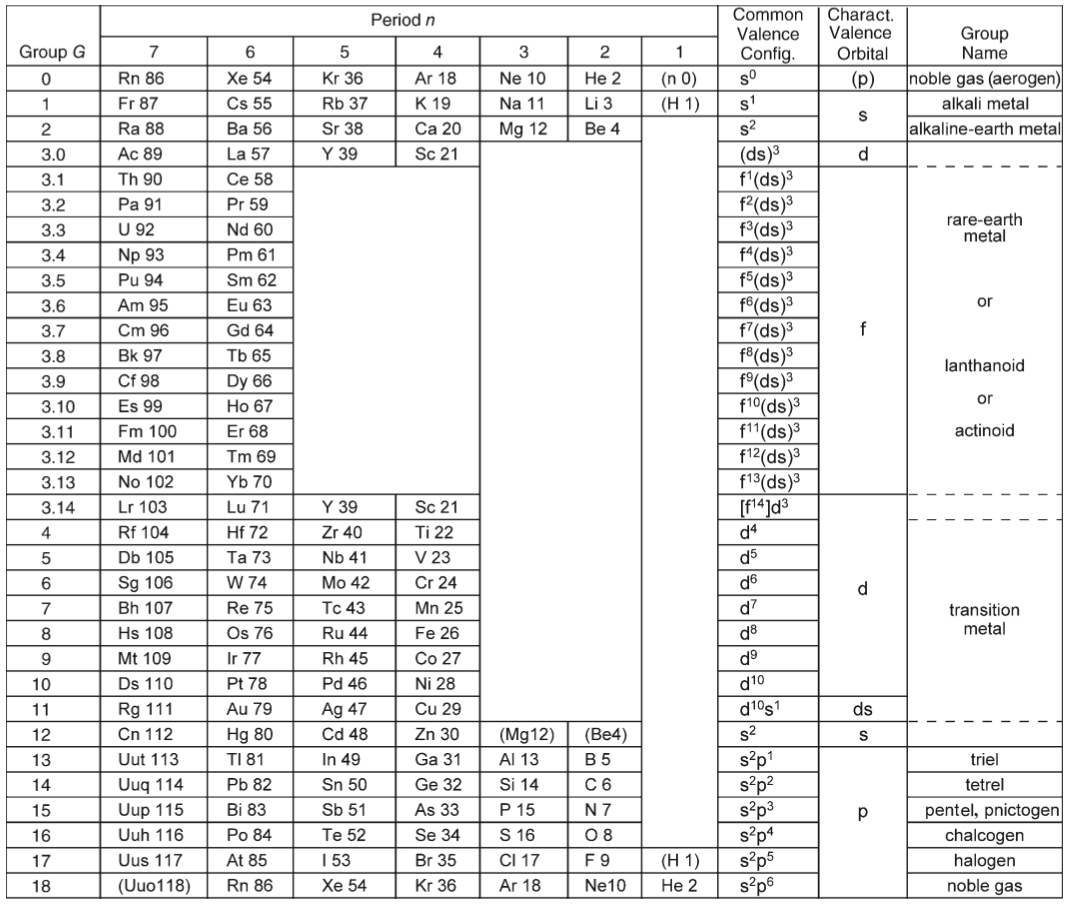
| Year: 2010 | PT id = 1310, Type = formulation spiral 3D |
Epicylindrical Periodic Table
An Epicylindrical Periodic Table by Steven Fowkes, who writes: "All the twist is confined to the s orbitals, 1/2 slant x 2 elements = one period lower."
Published in the Reed College Alumni Magazine March 2010.



| Year: 2010 | PT id = 1338, Type = misc |
元素 (The Elements song in Japanese)
 |
 |
 |
| What is the Periodic Table Showing? | Periodicity |
© Mark R. Leach Ph.D. 1999 –
Queries, Suggestions, Bugs, Errors, Typos...
If you have any:
Queries
Comments
Suggestions
Suggestions for links
Bug, typo or grammatical error reports about this page,please contact Mark R. Leach, the author, using mark@meta-synthesis.com
This free, open access web book is an ongoing project and your input is appreciated.

